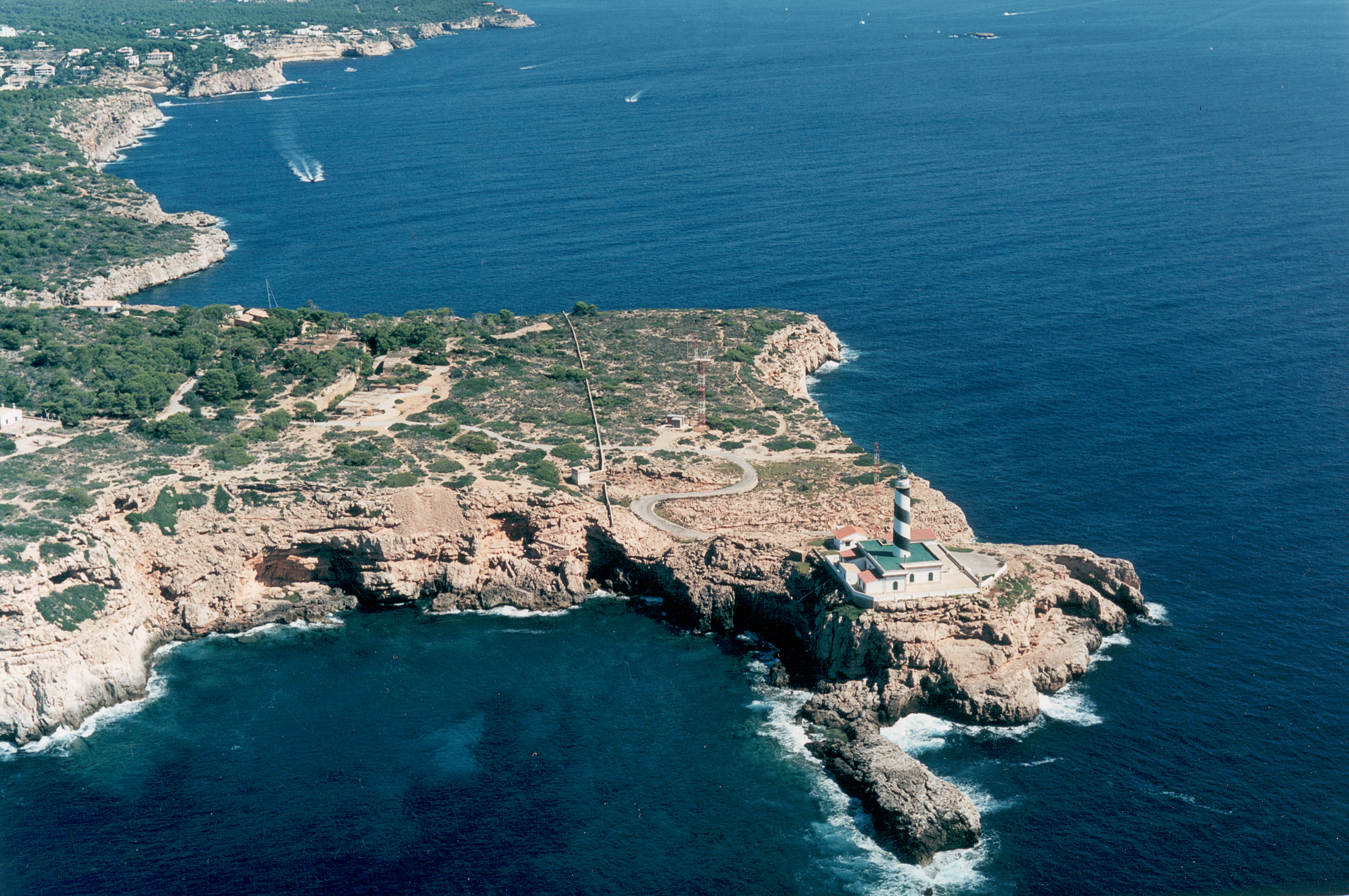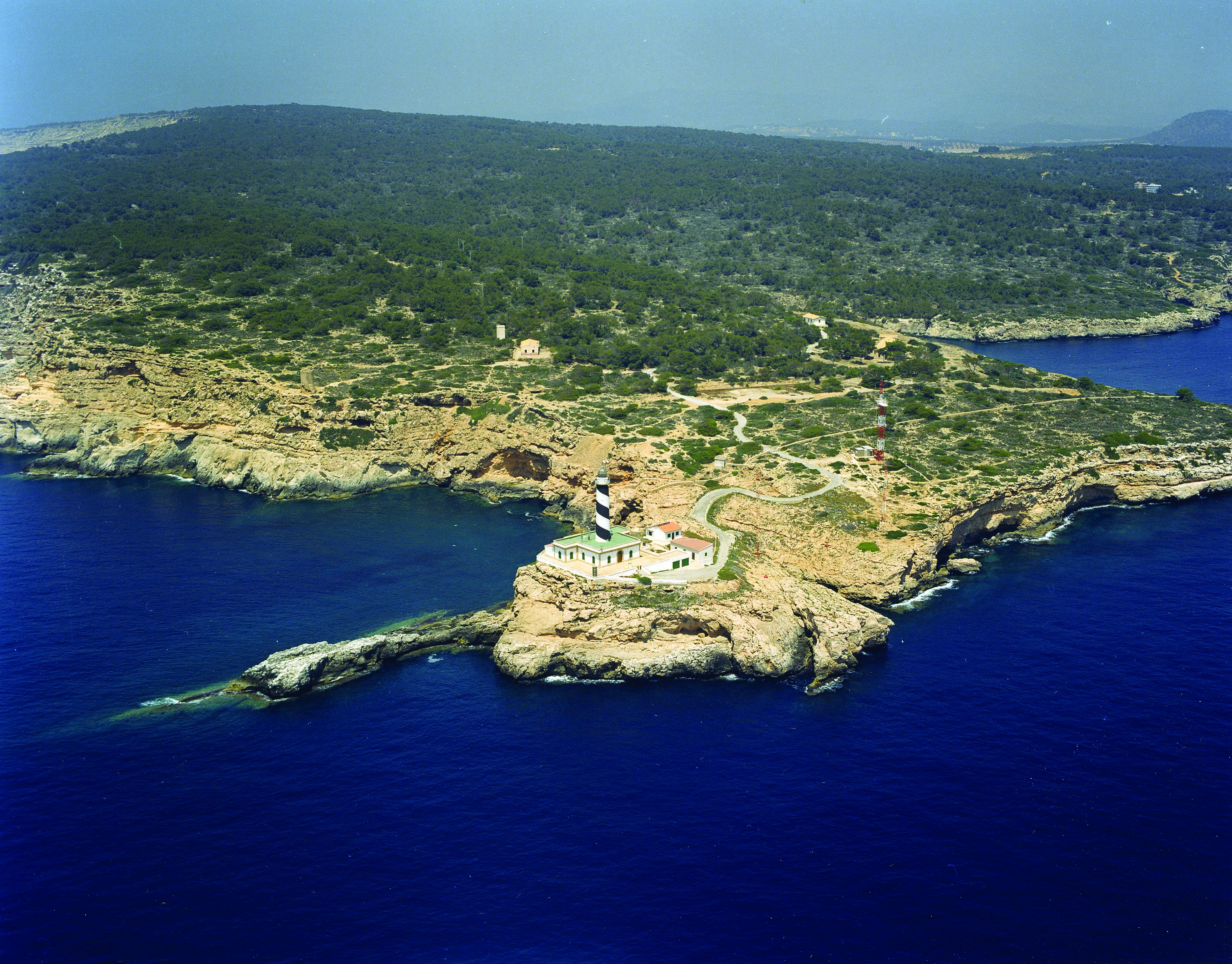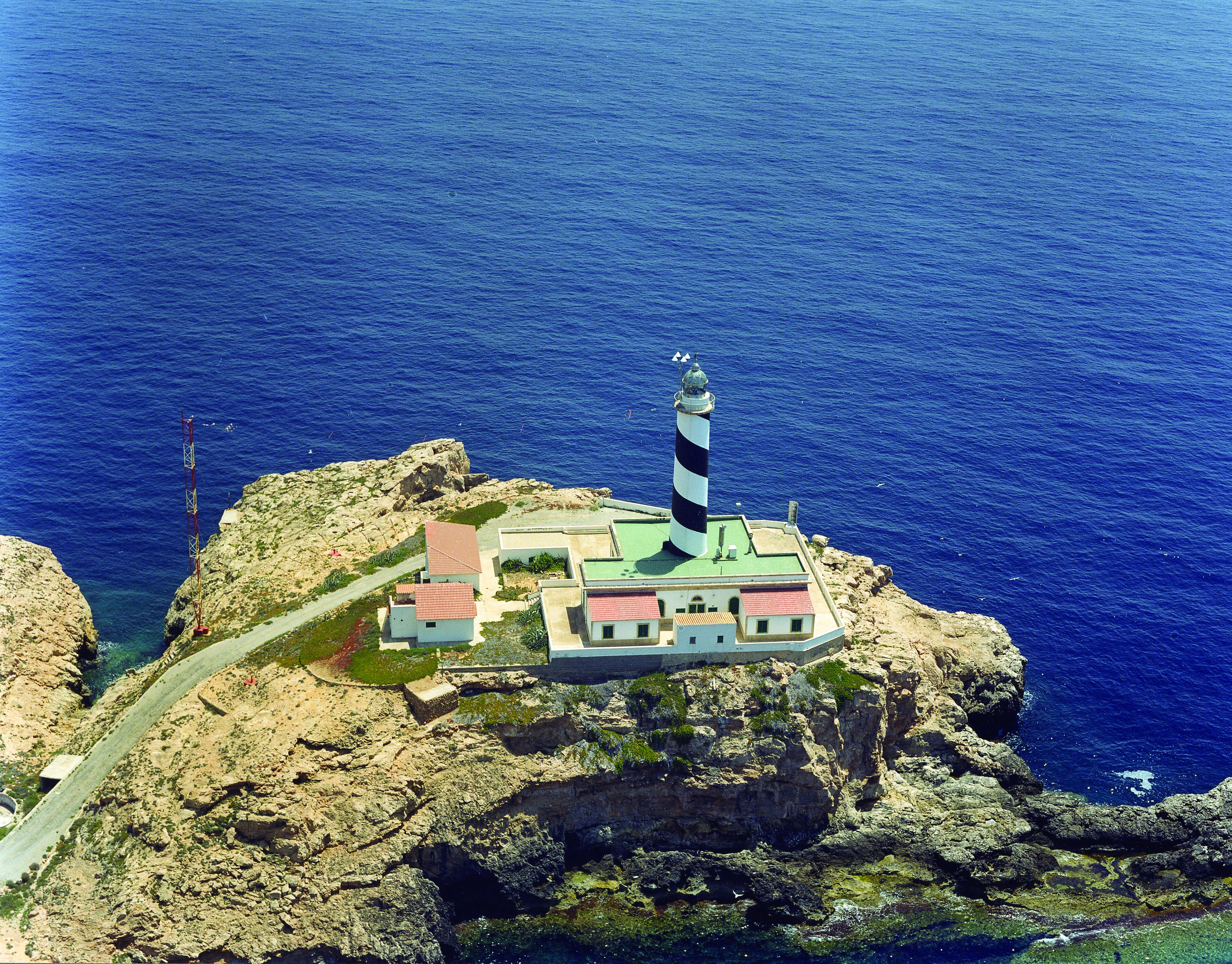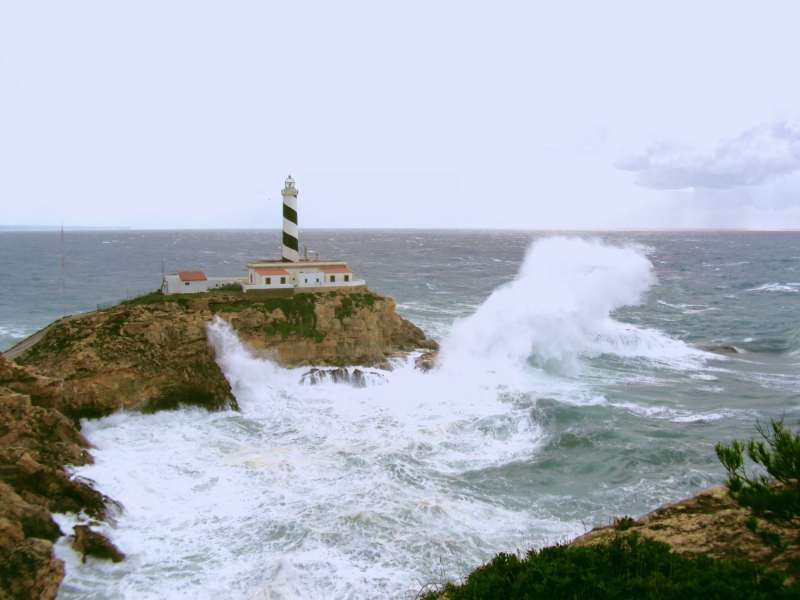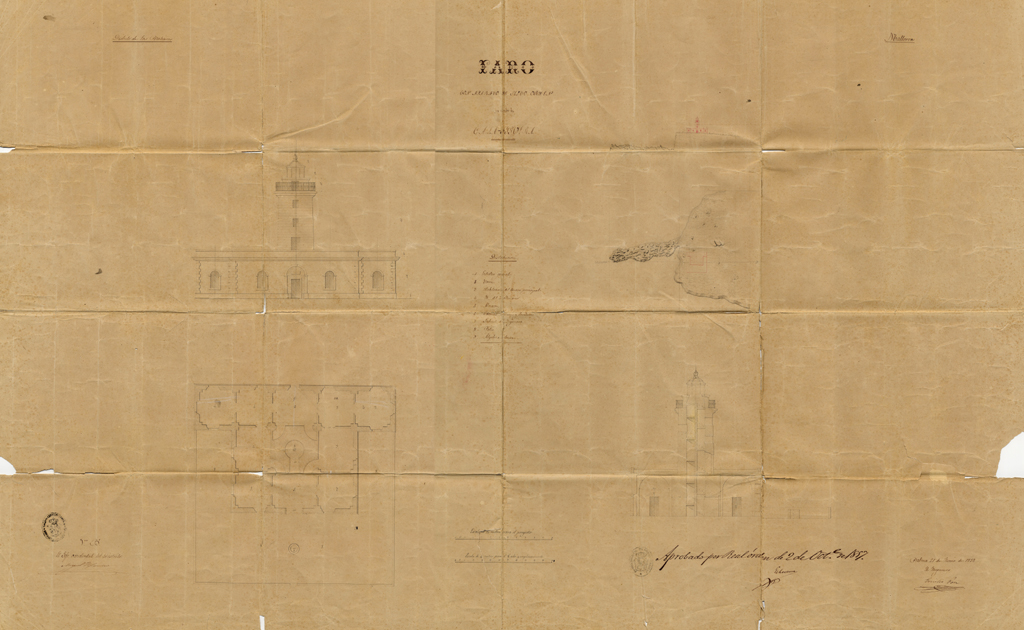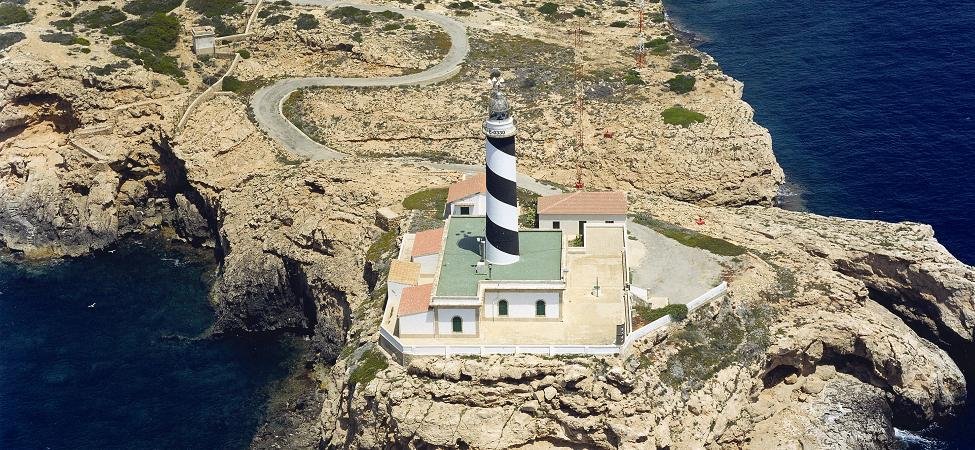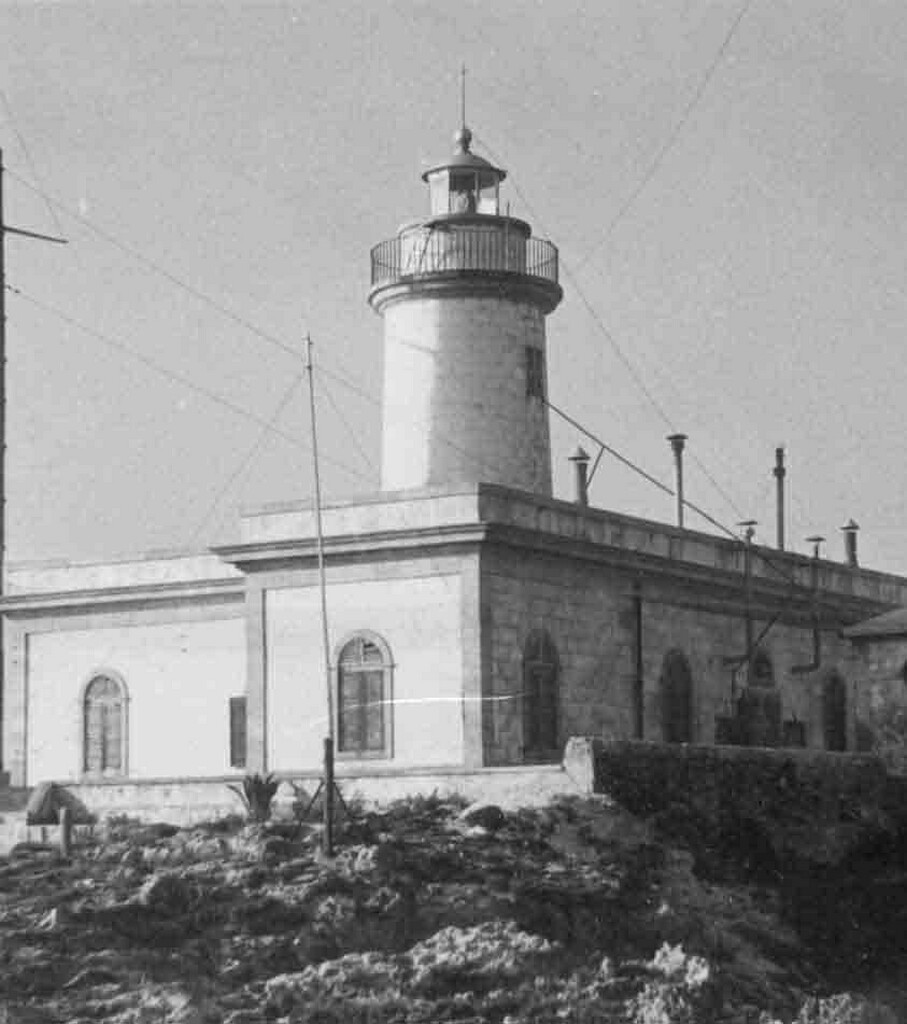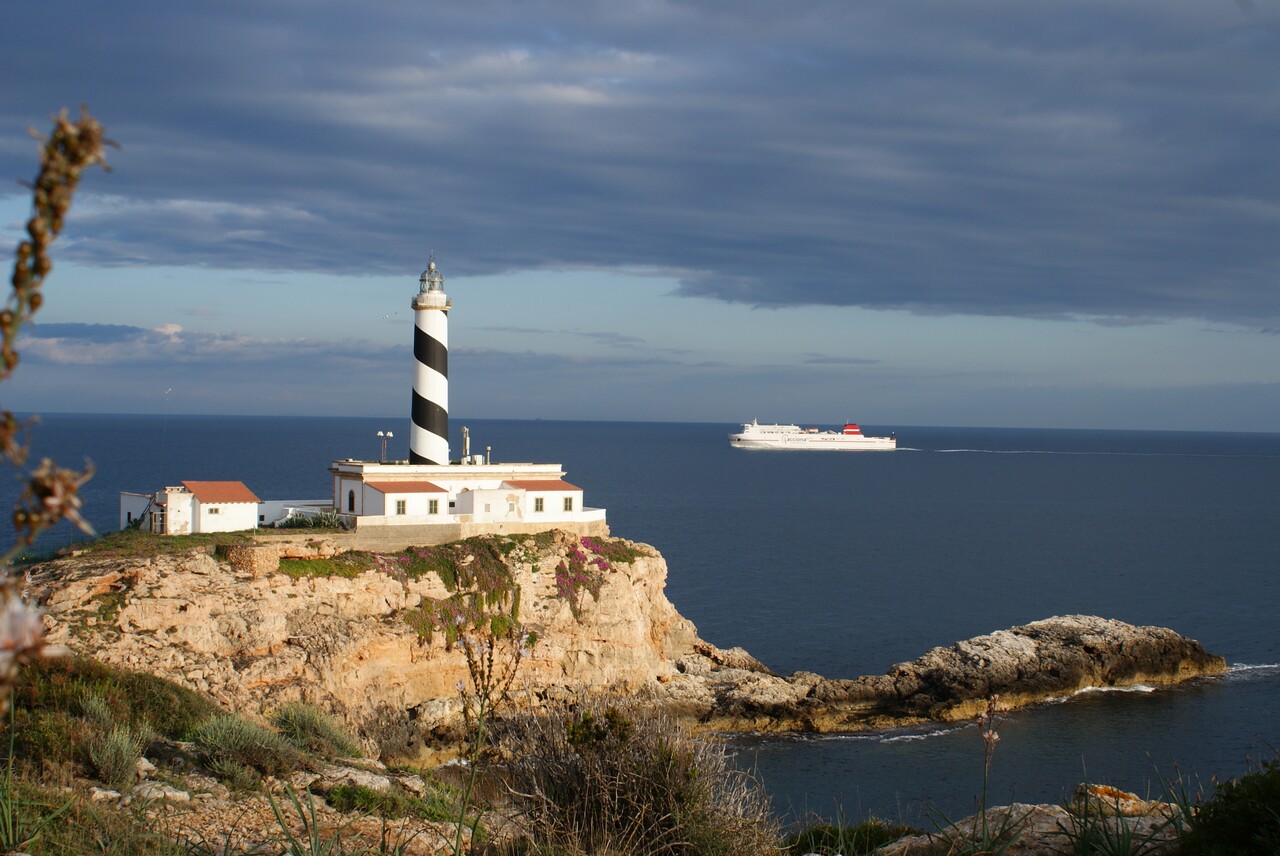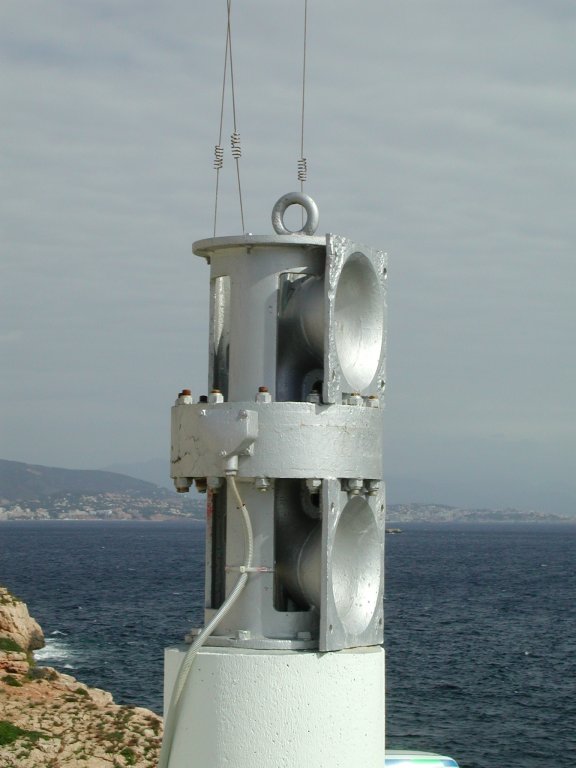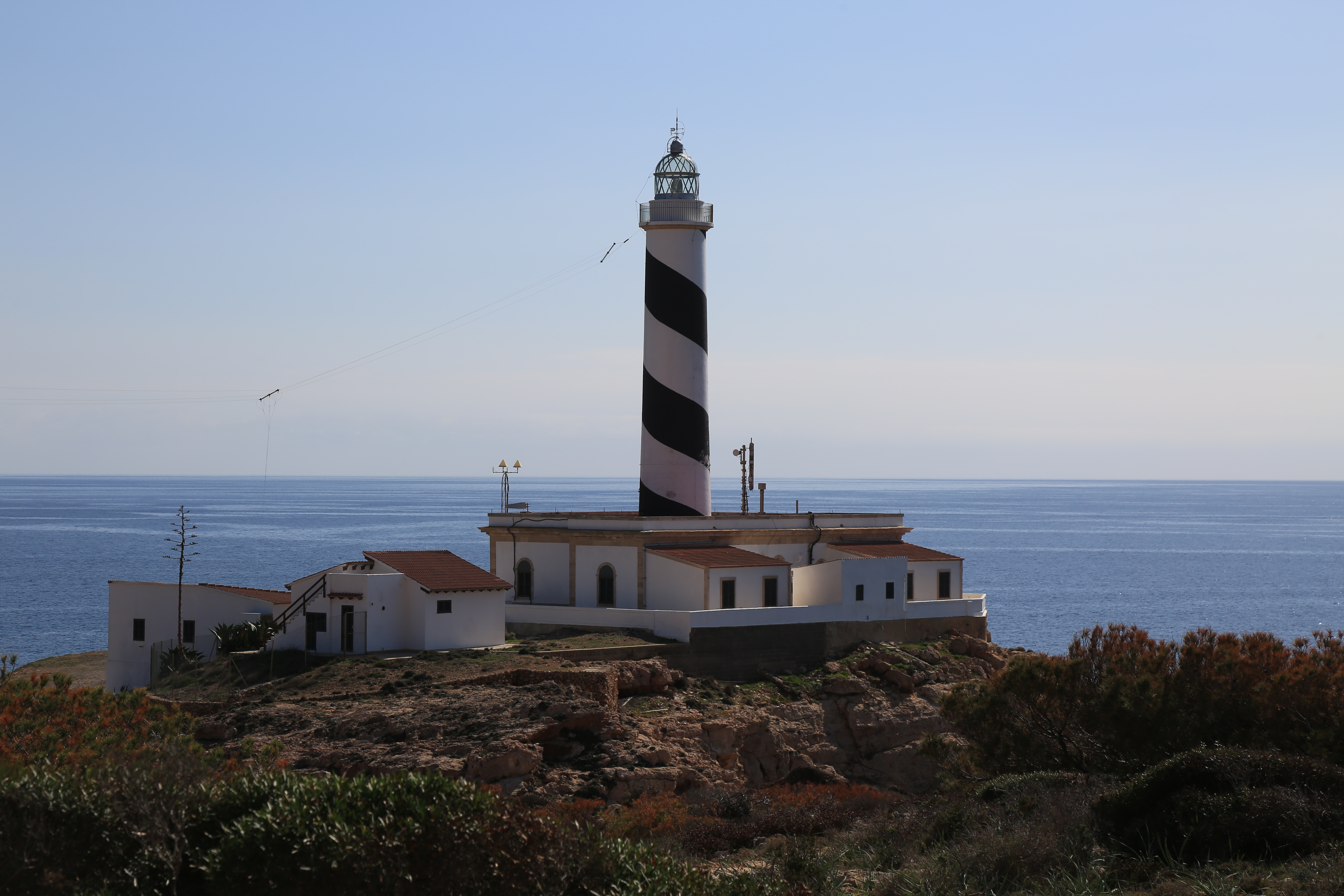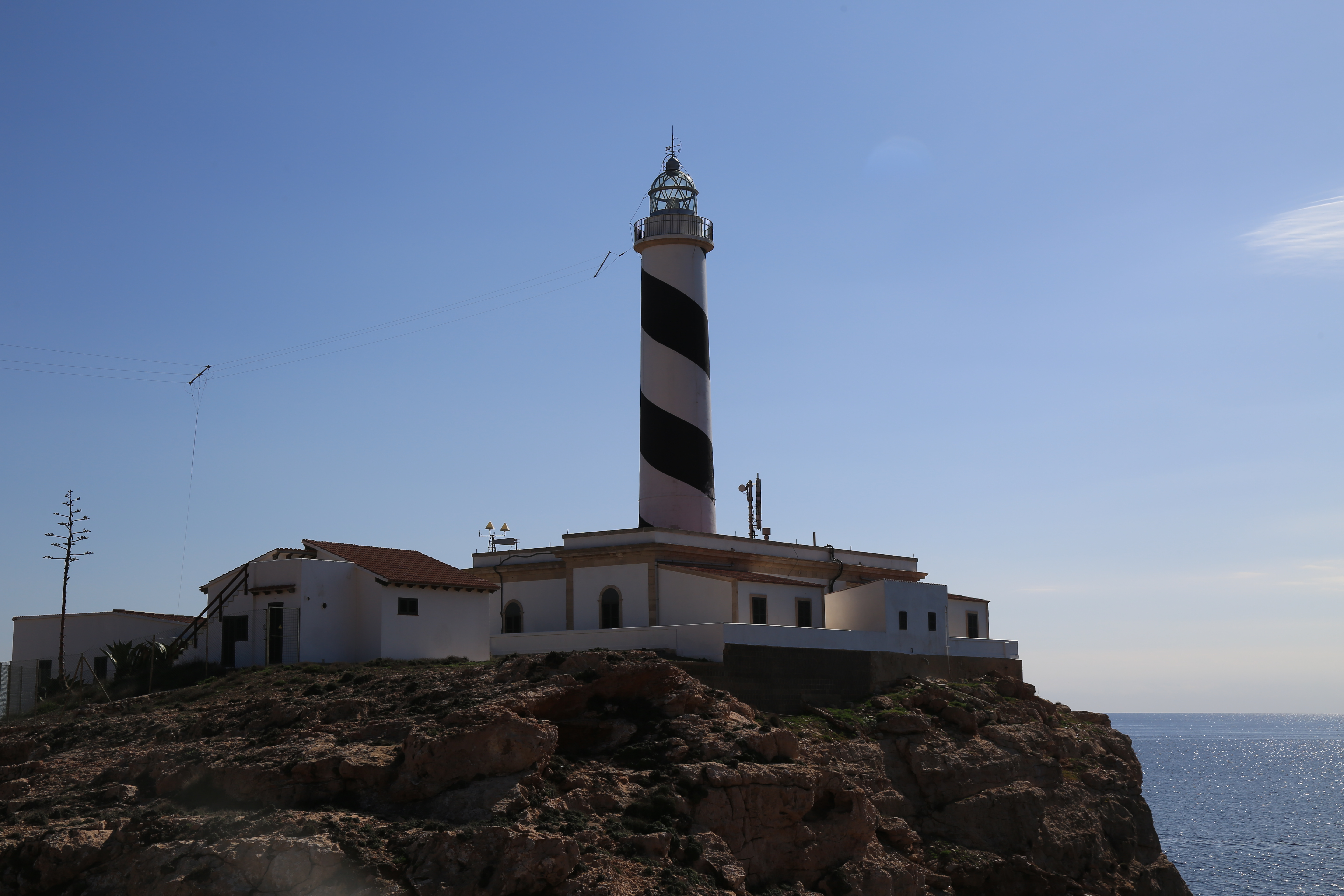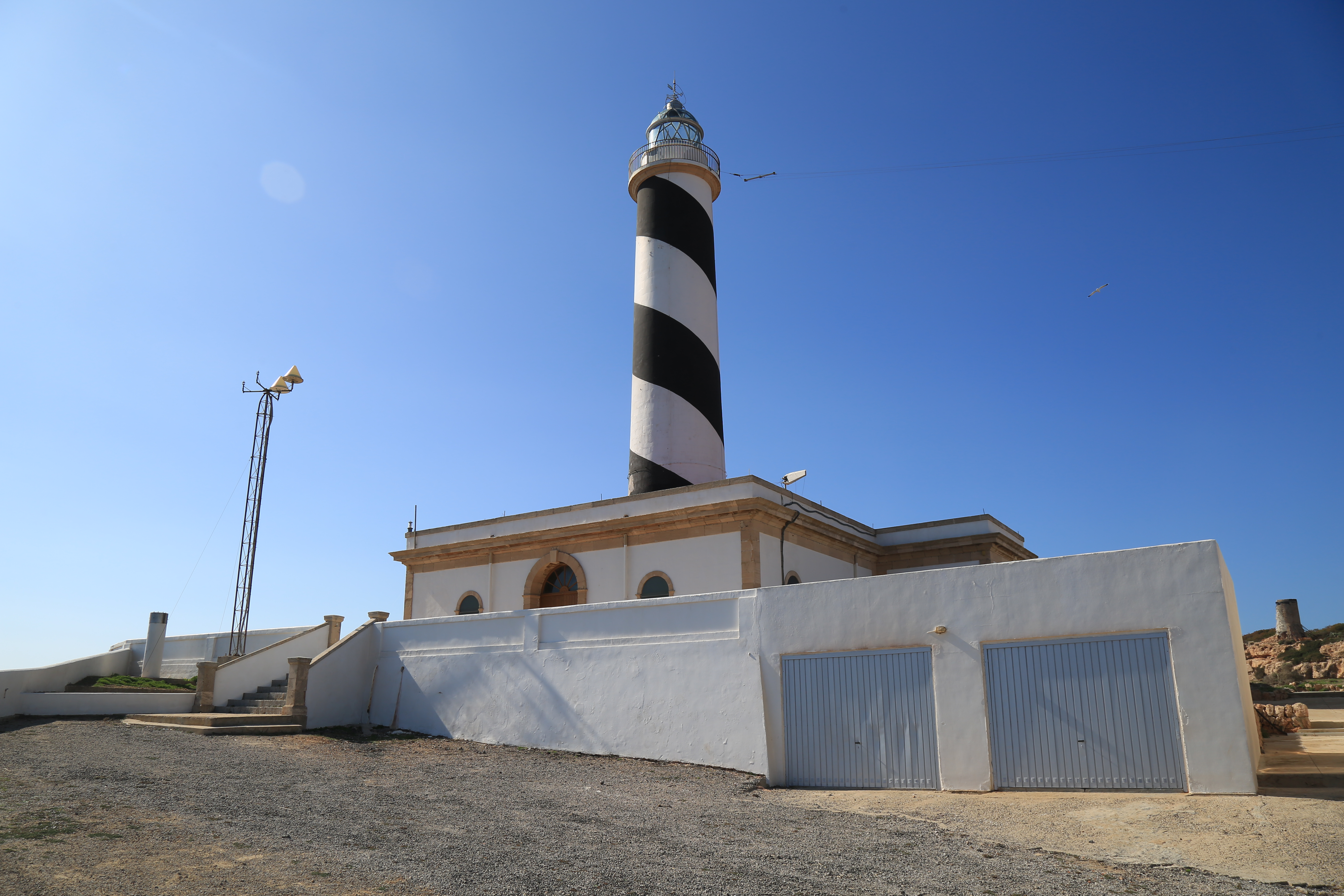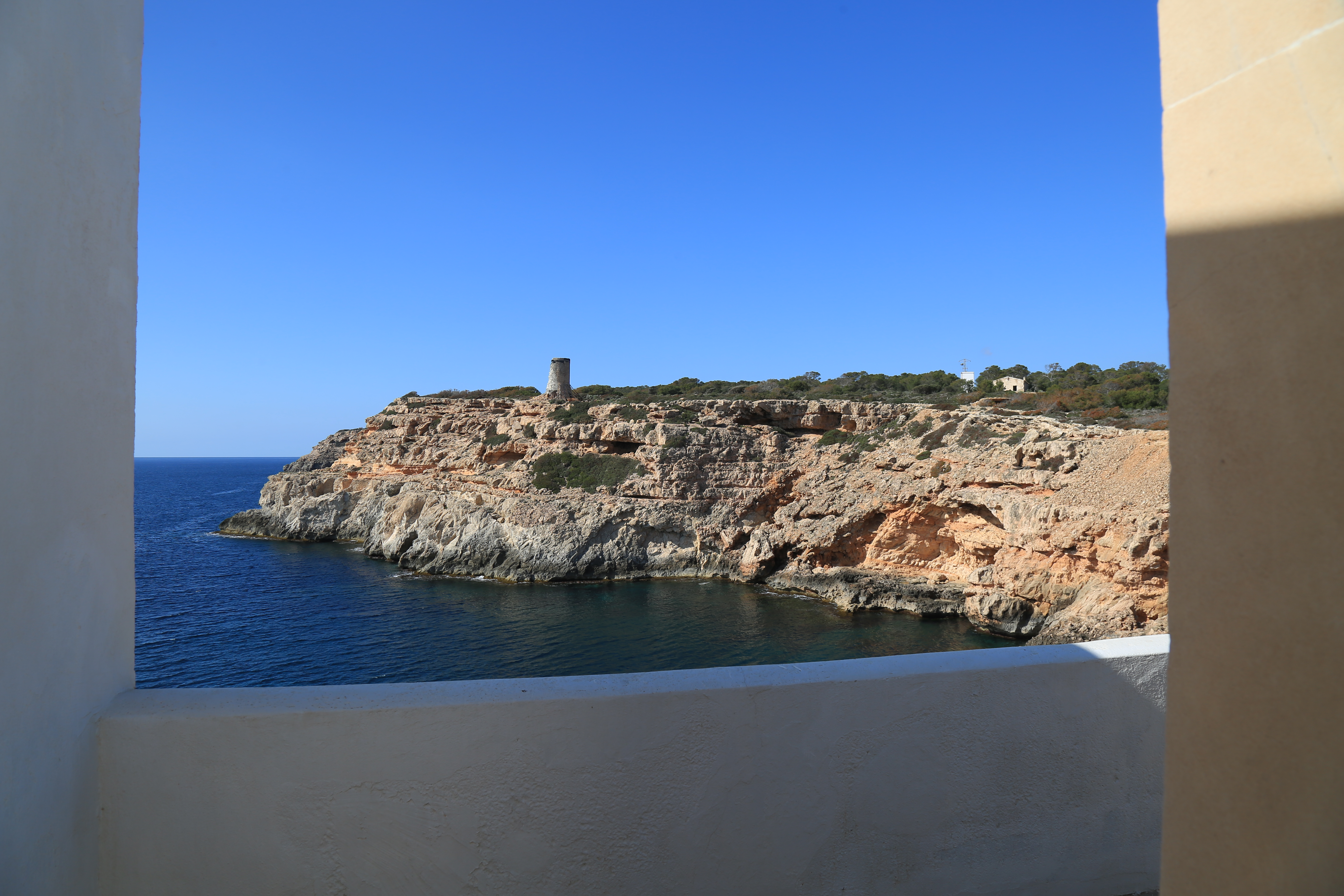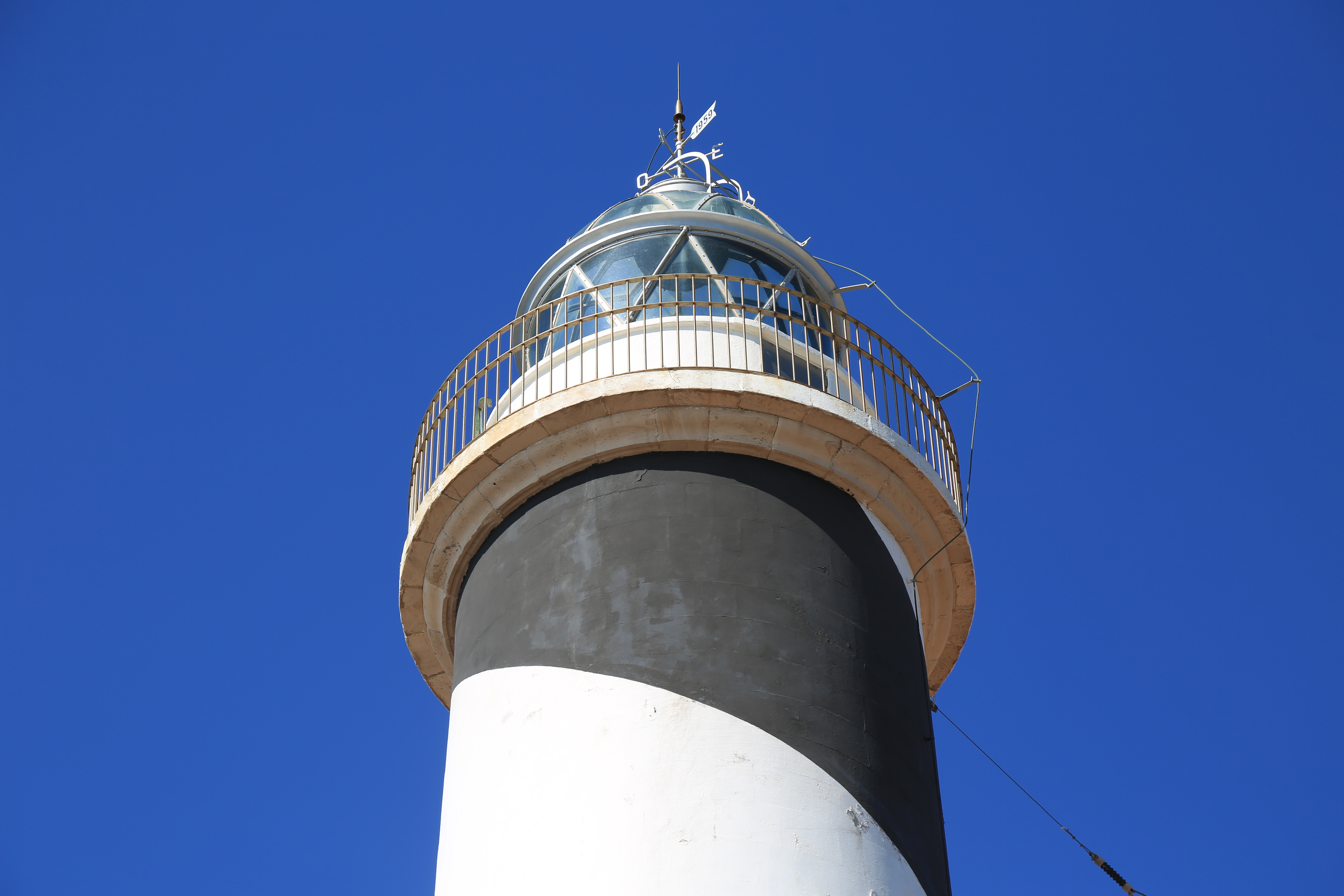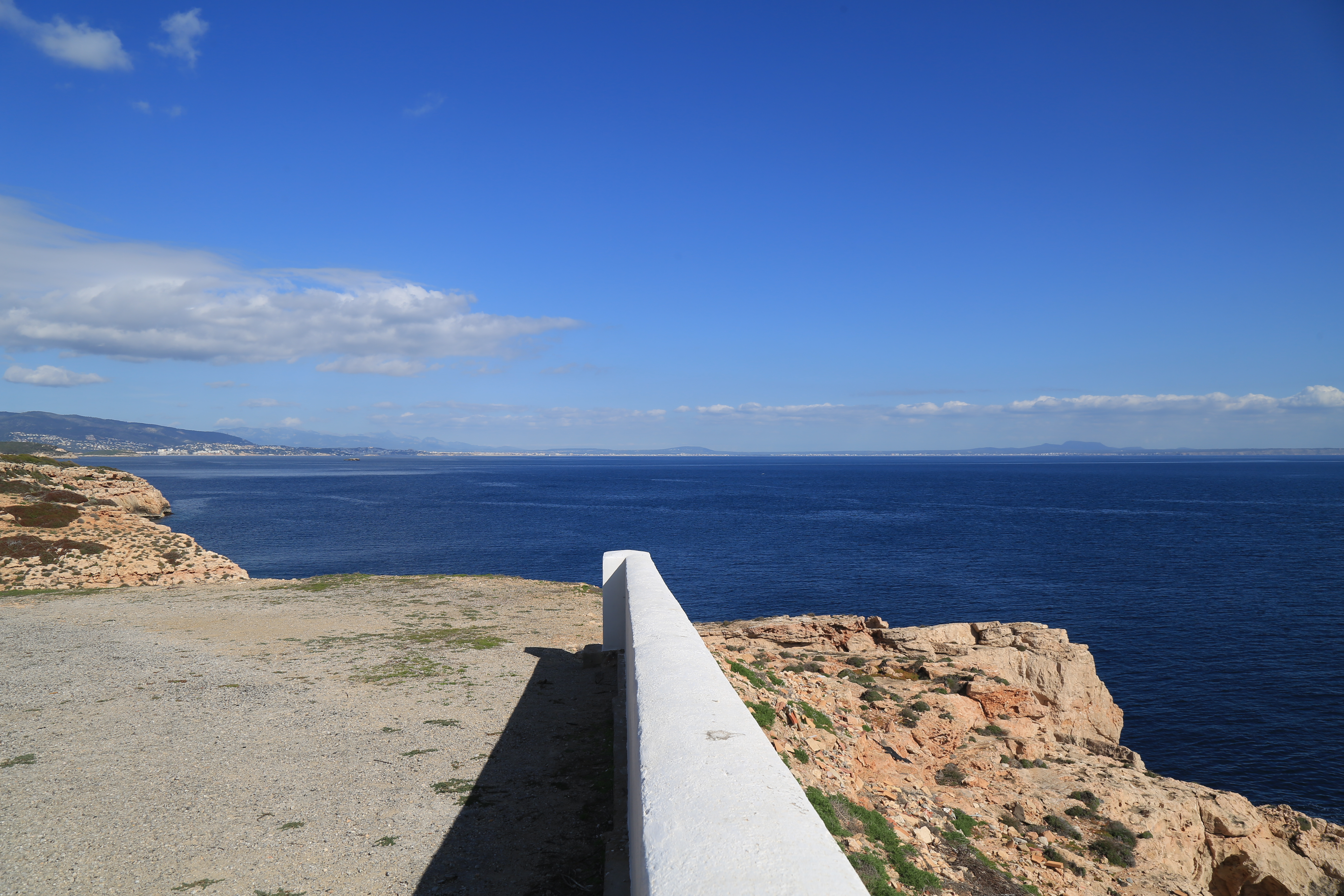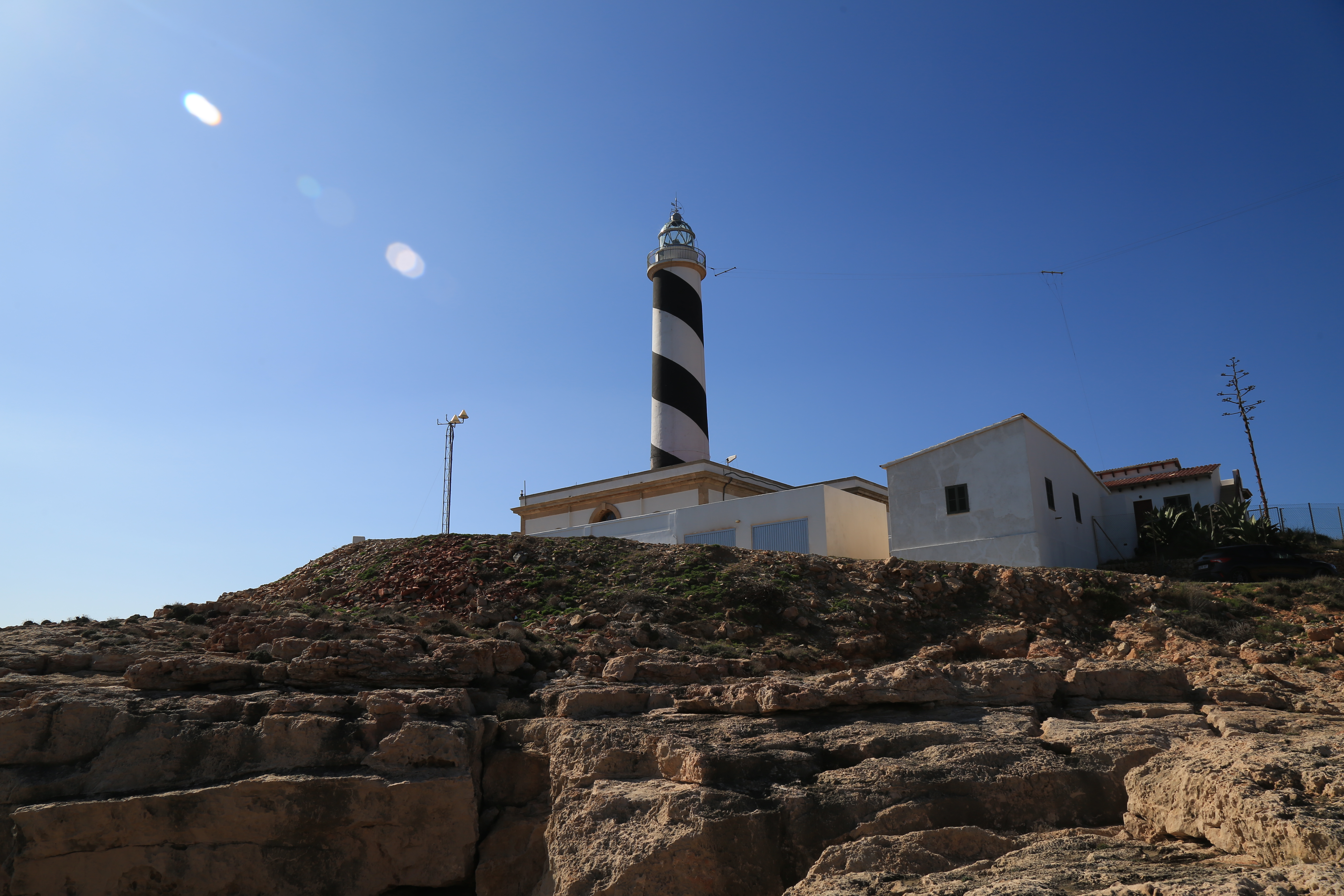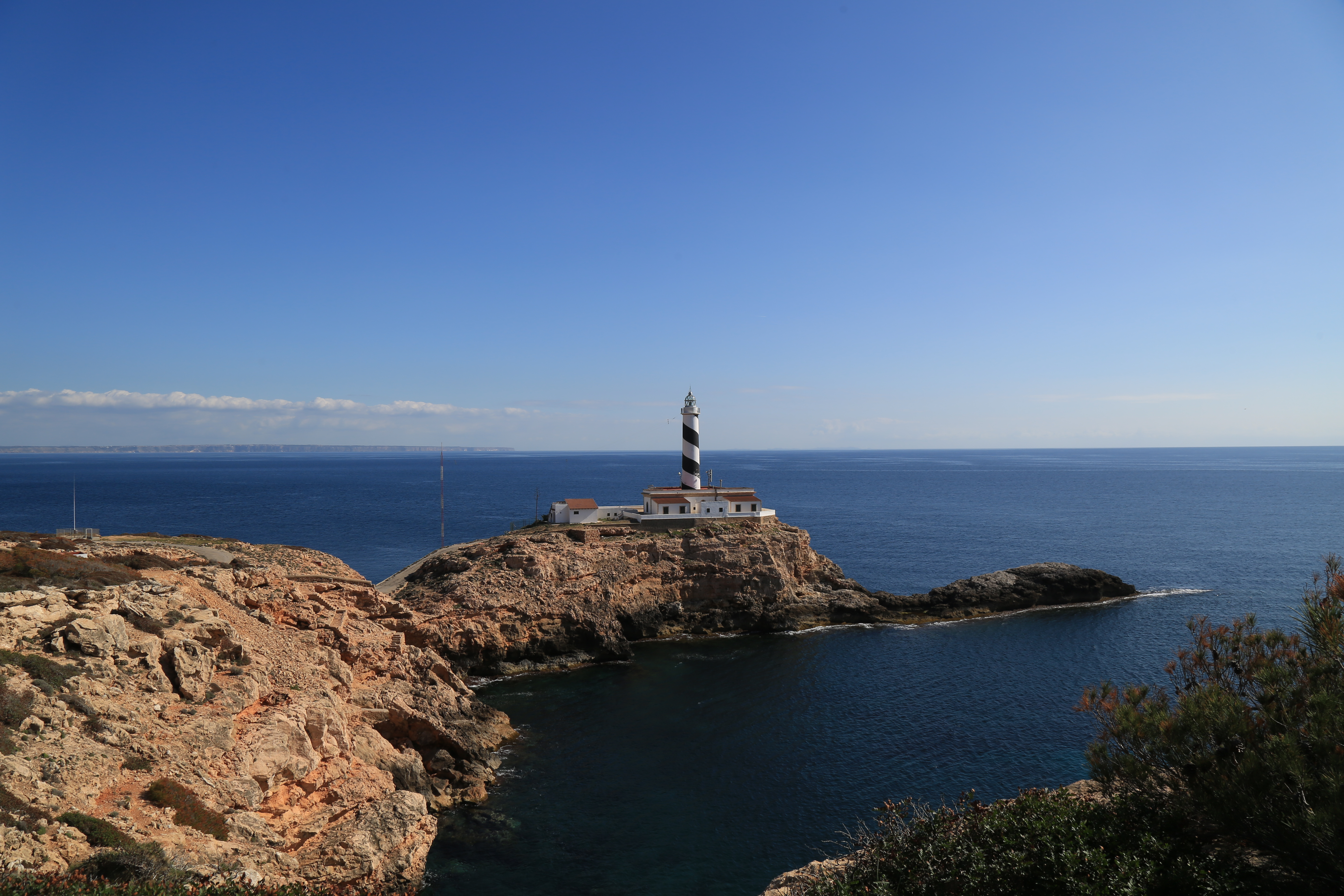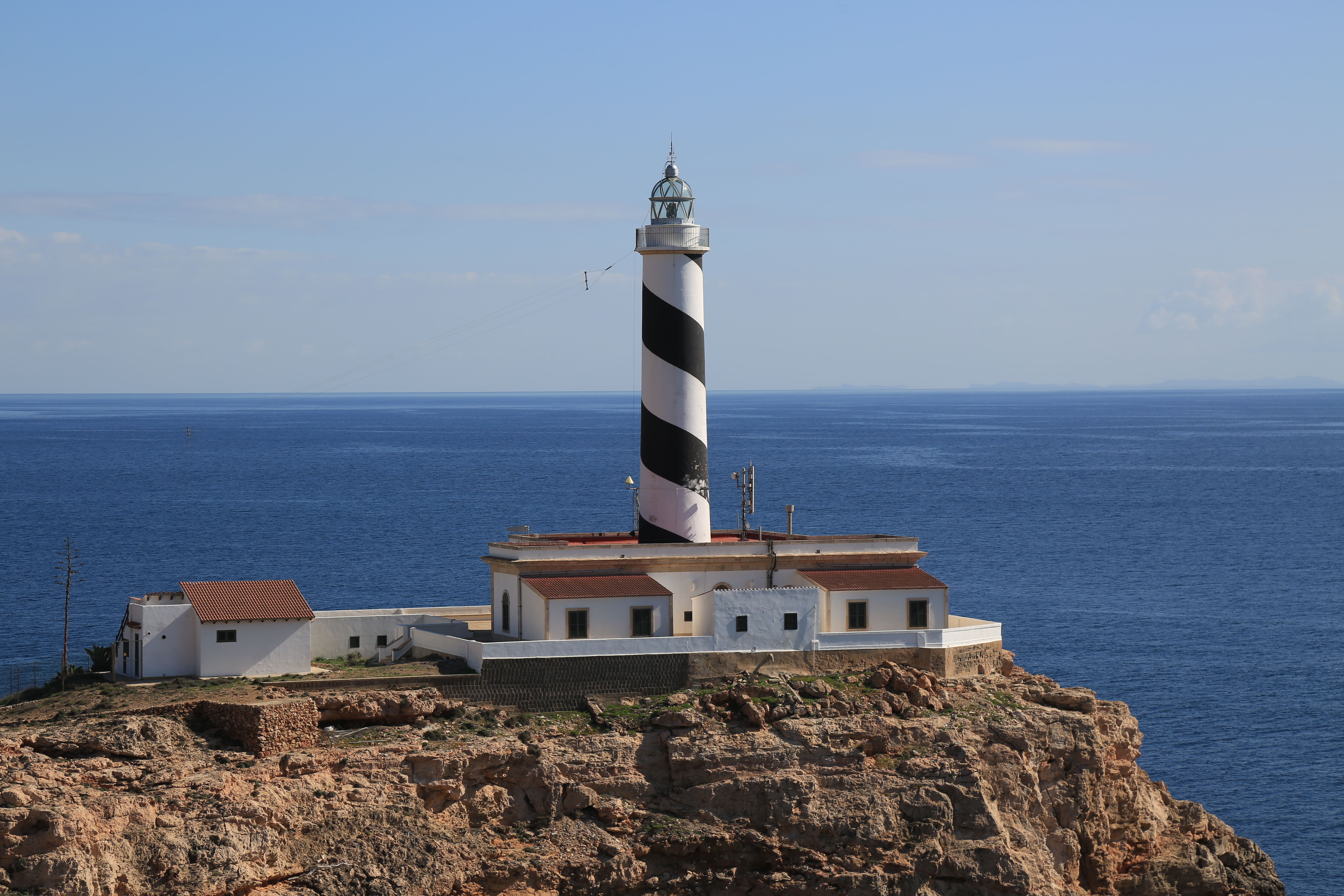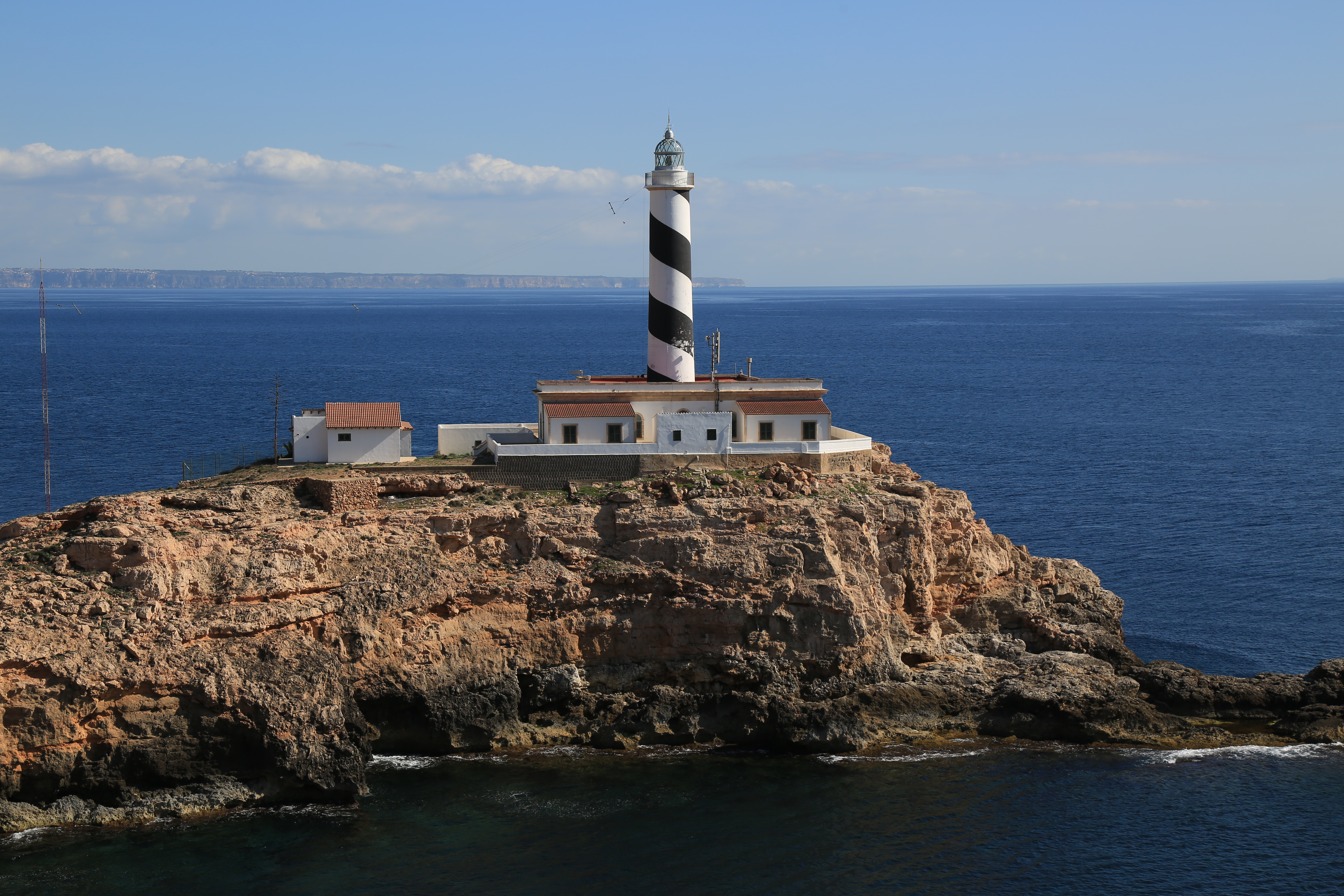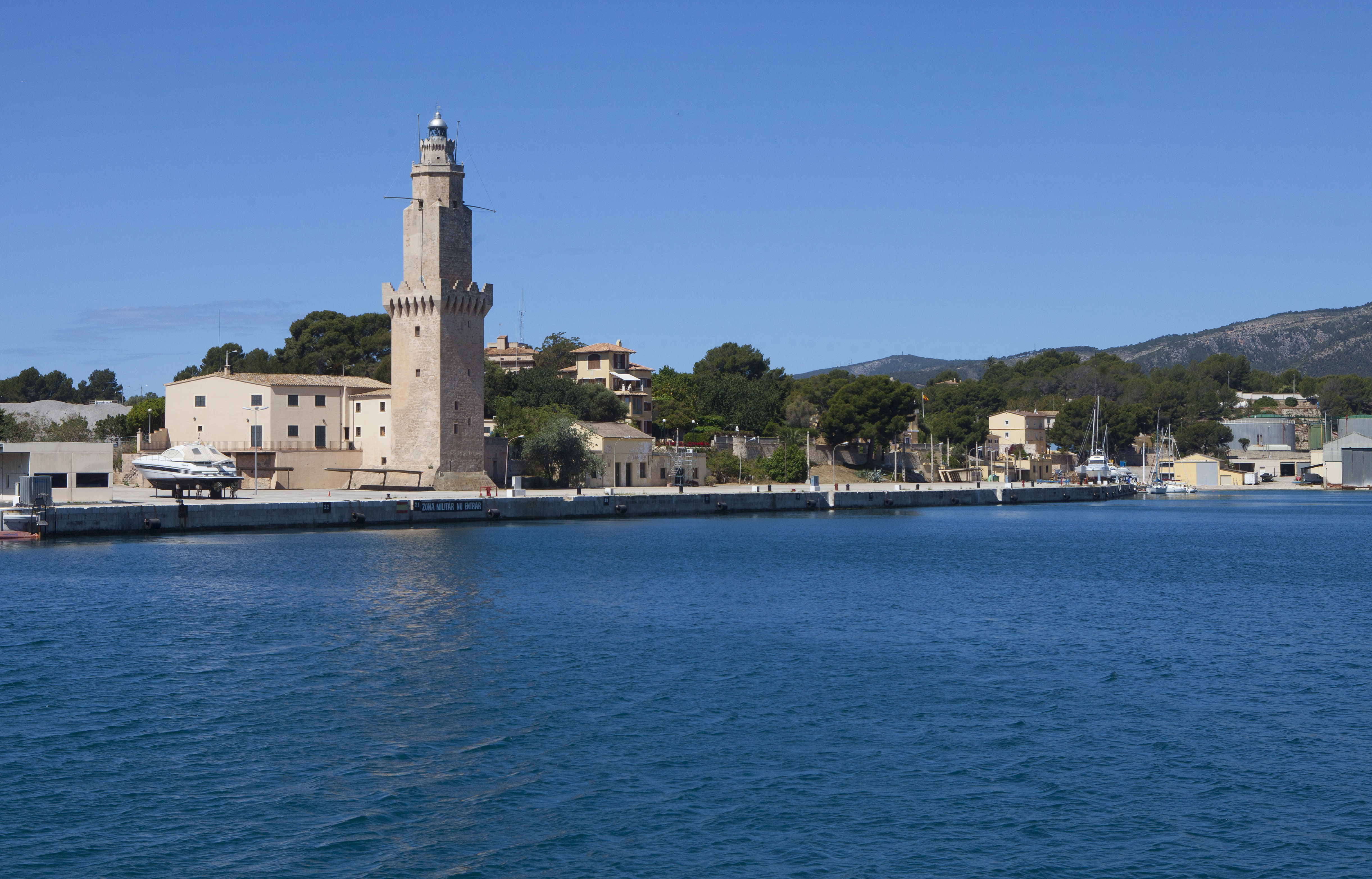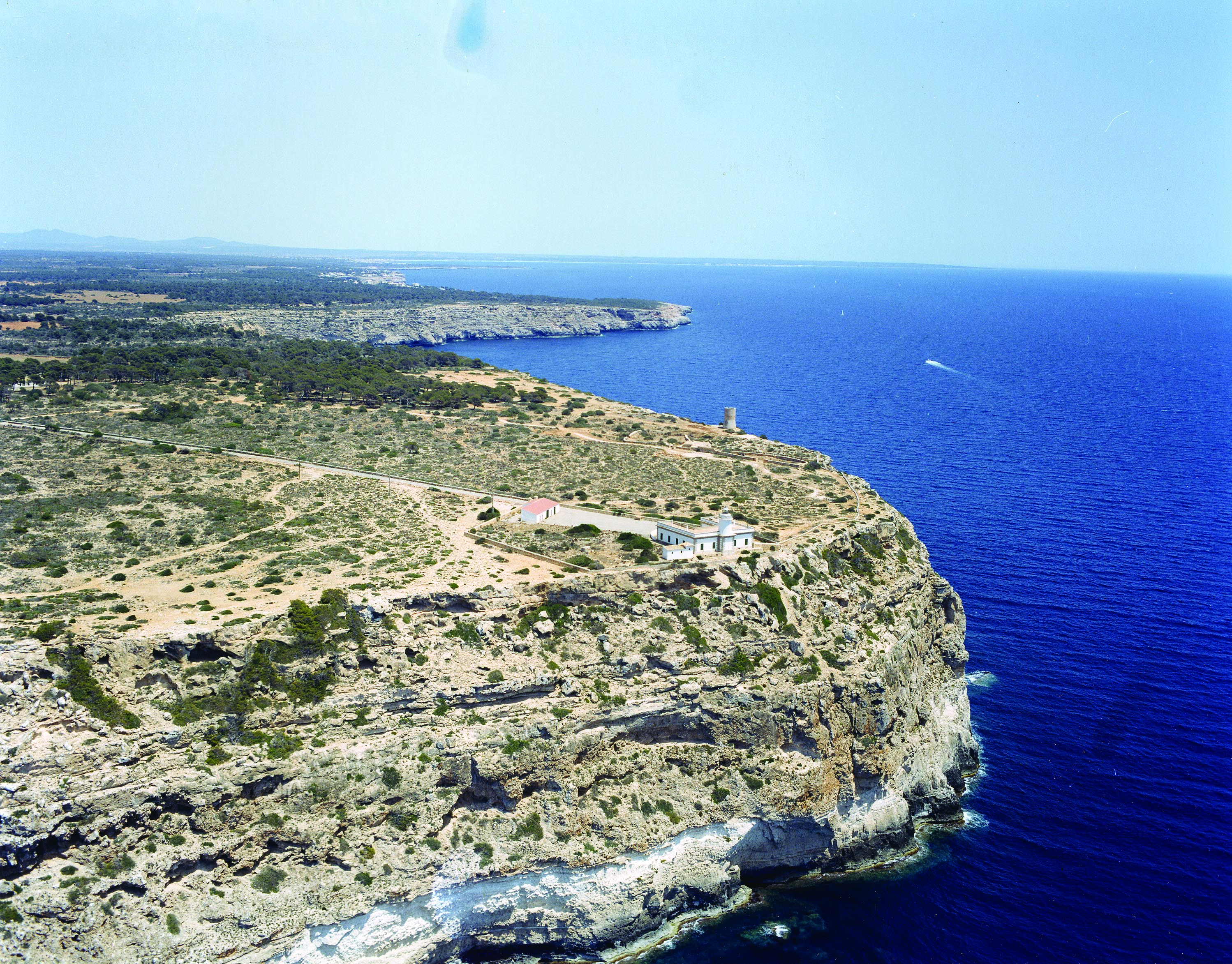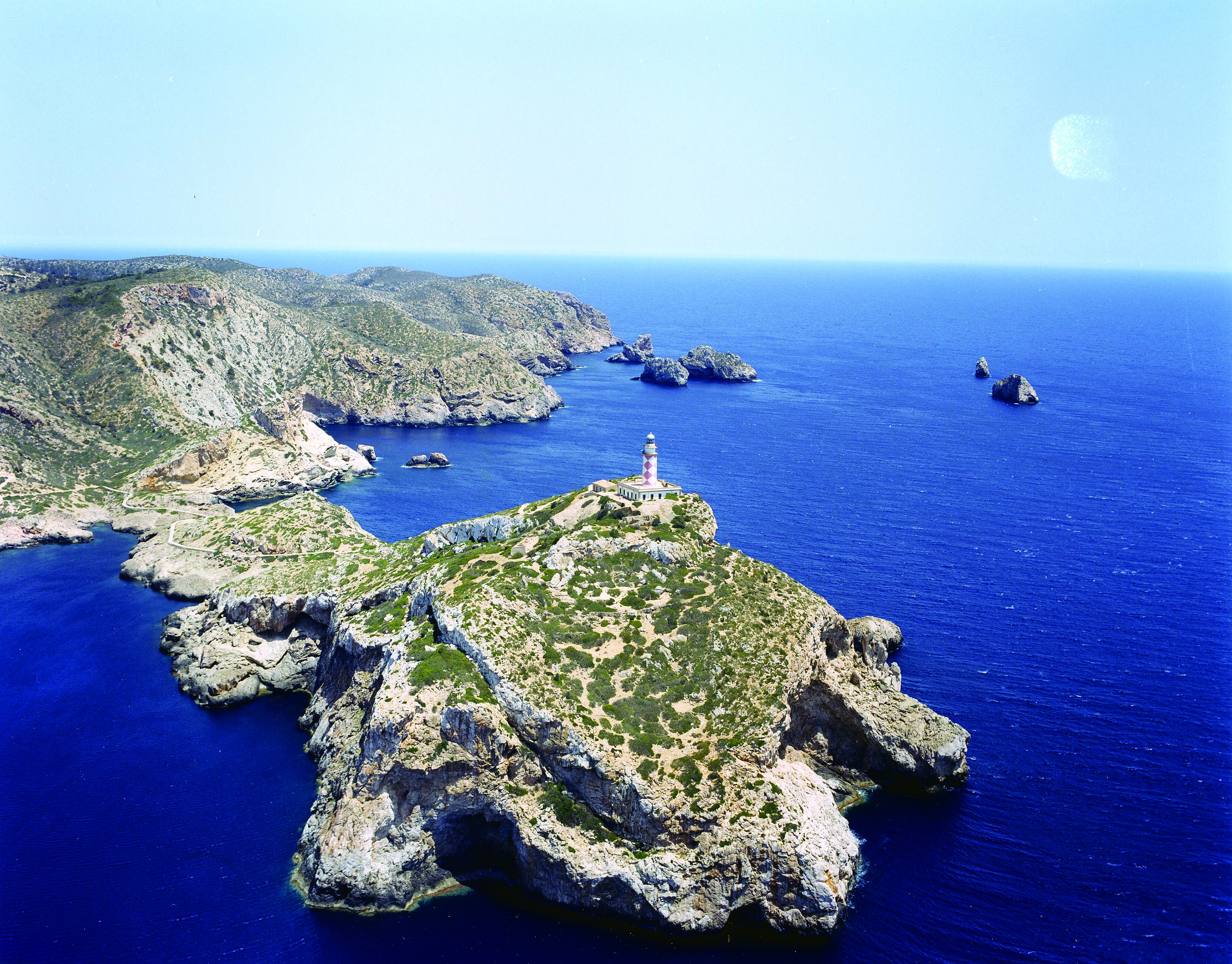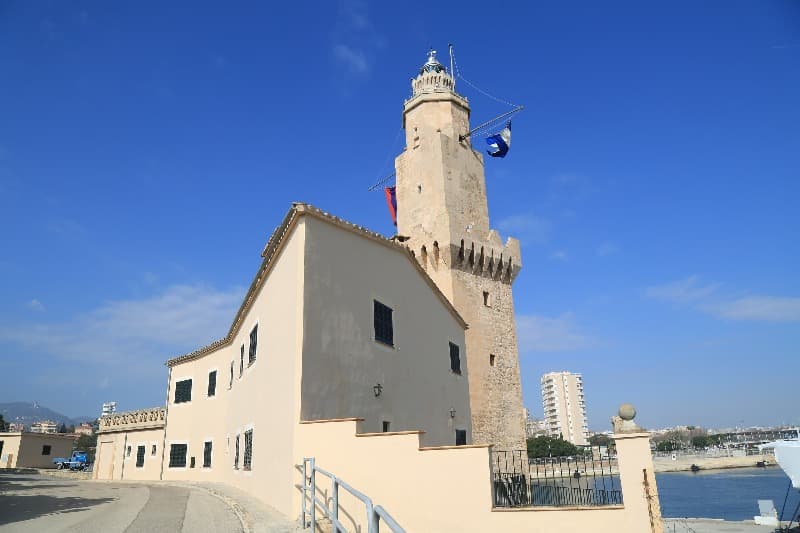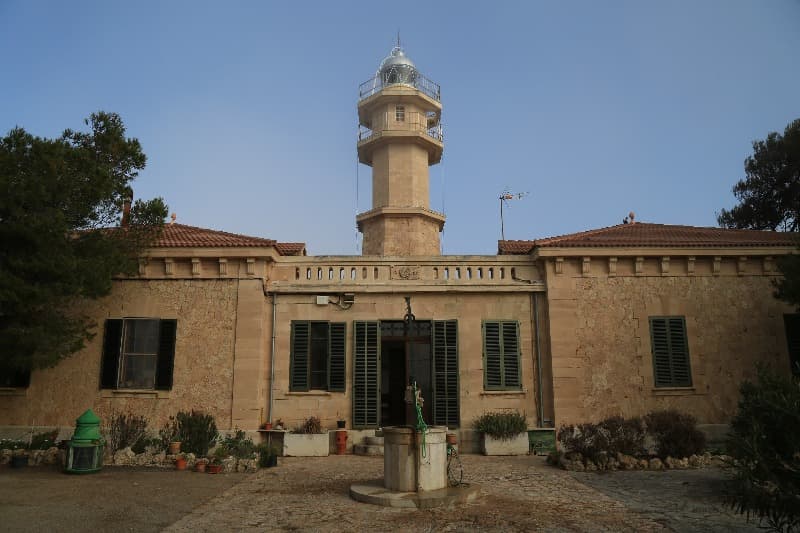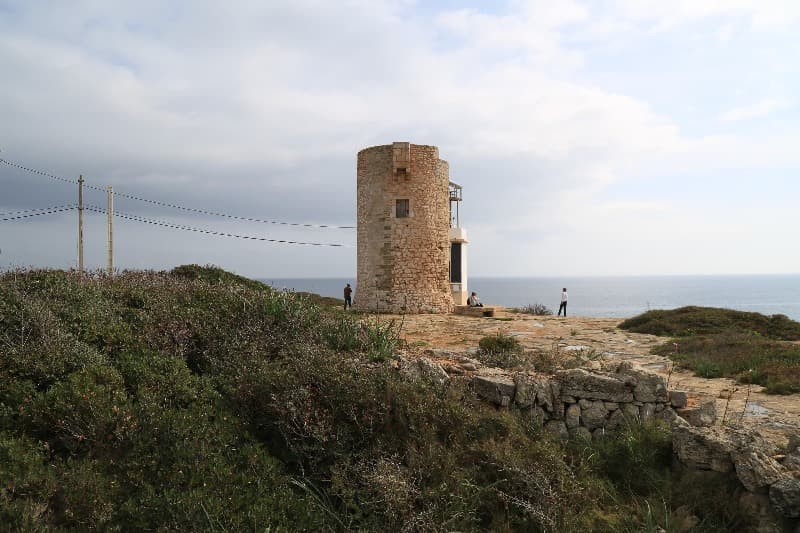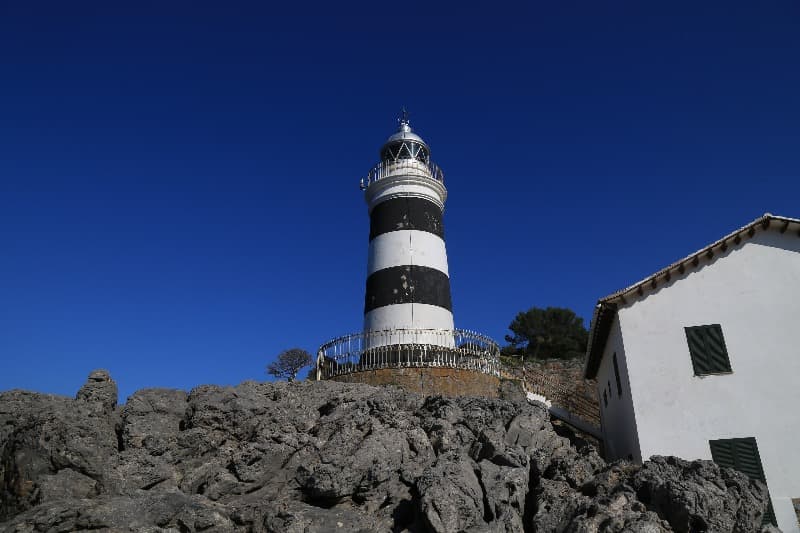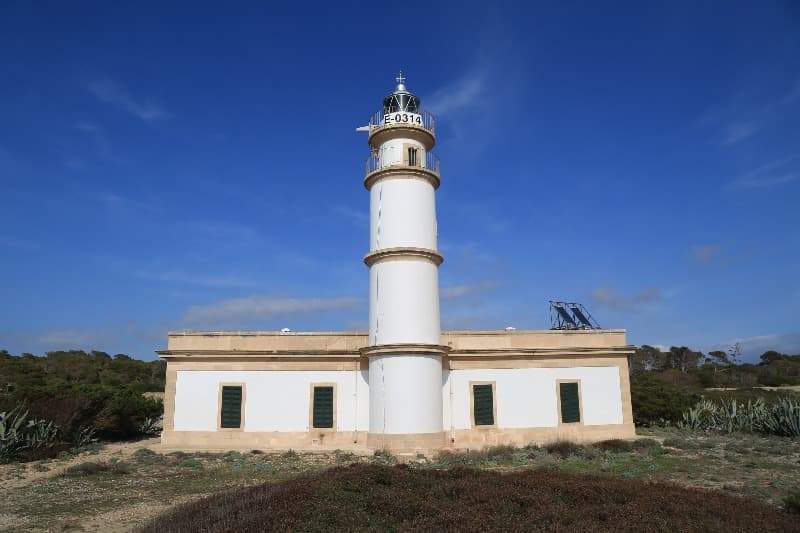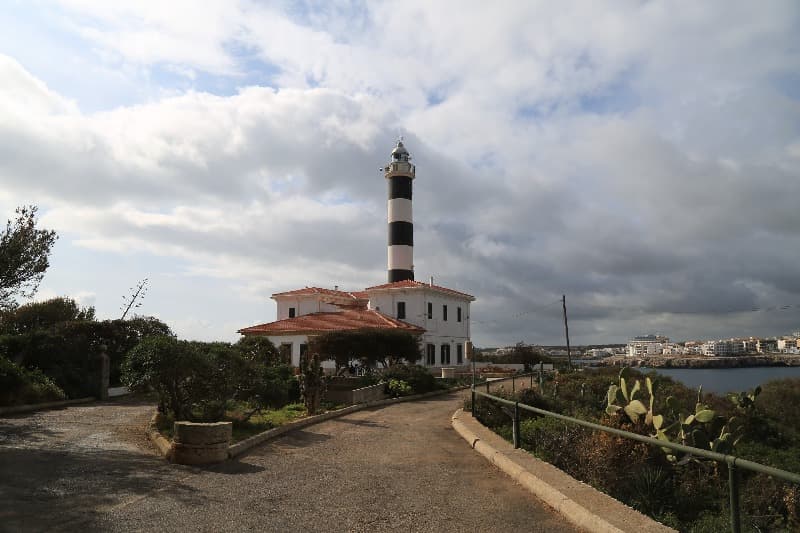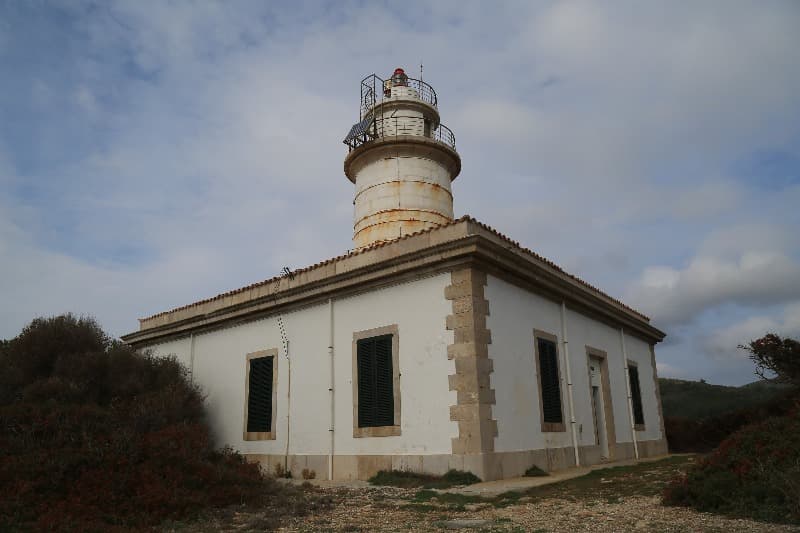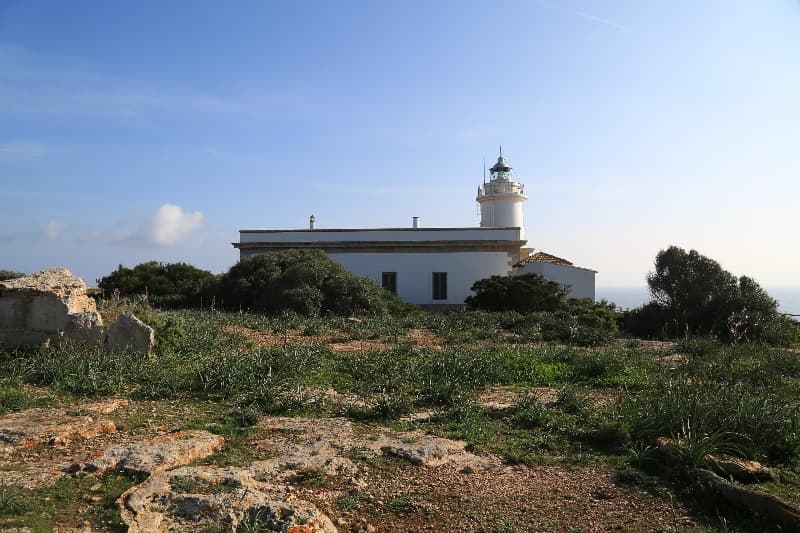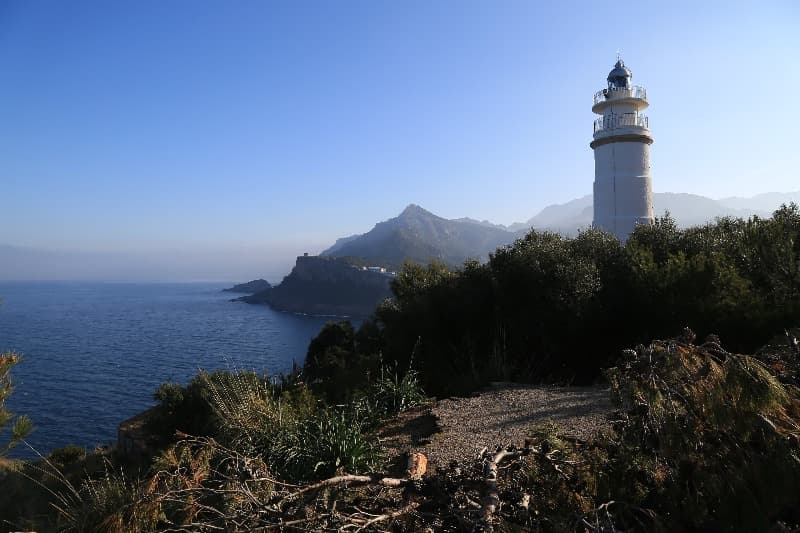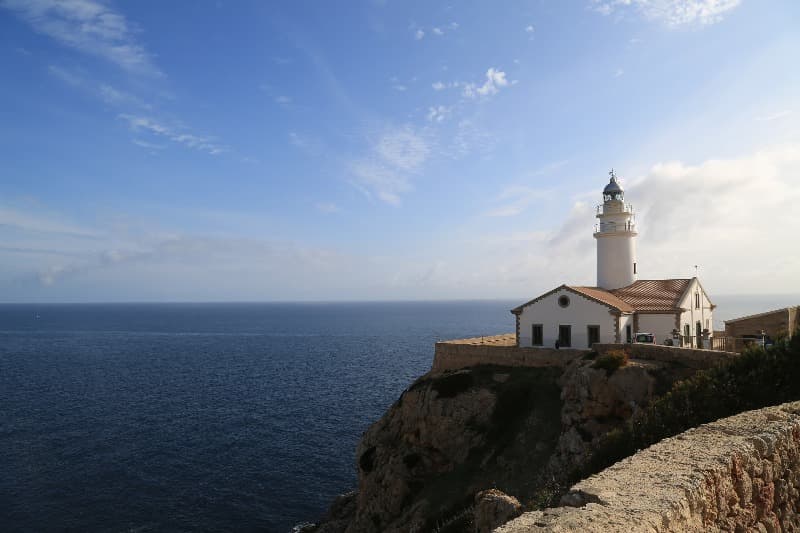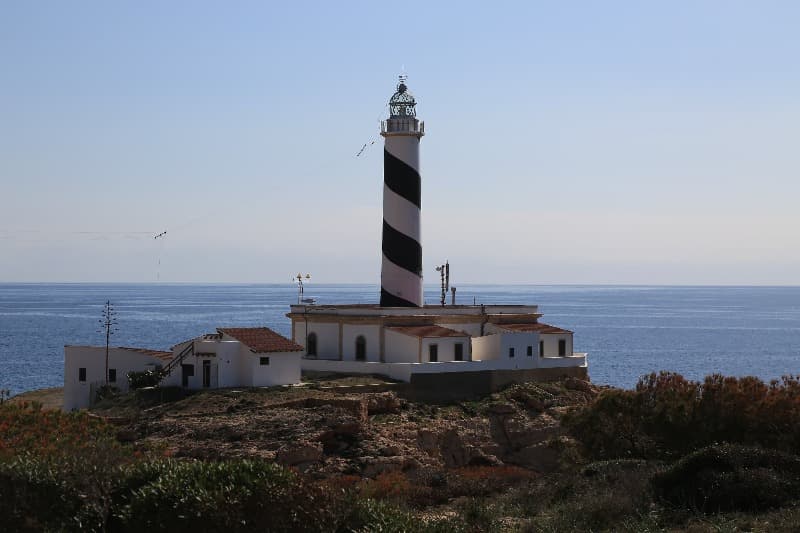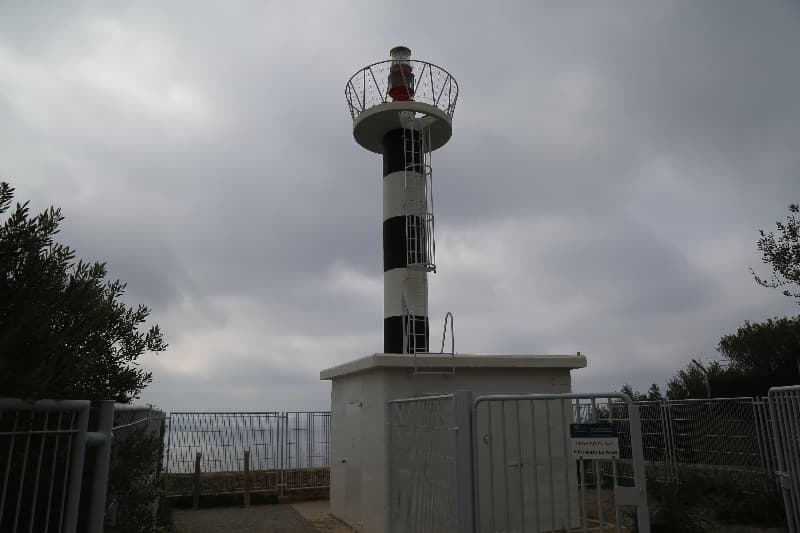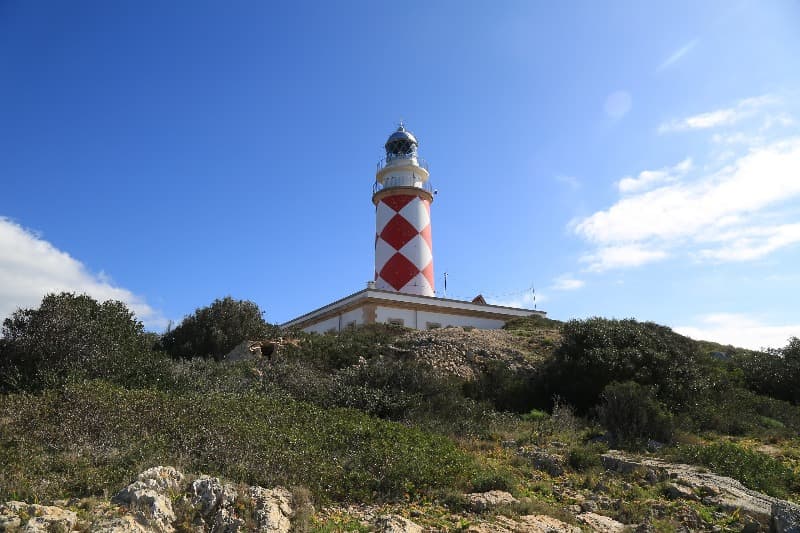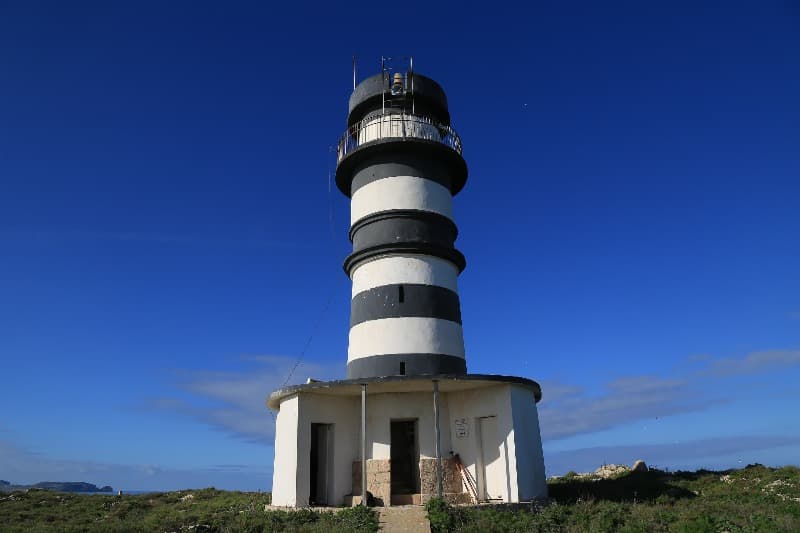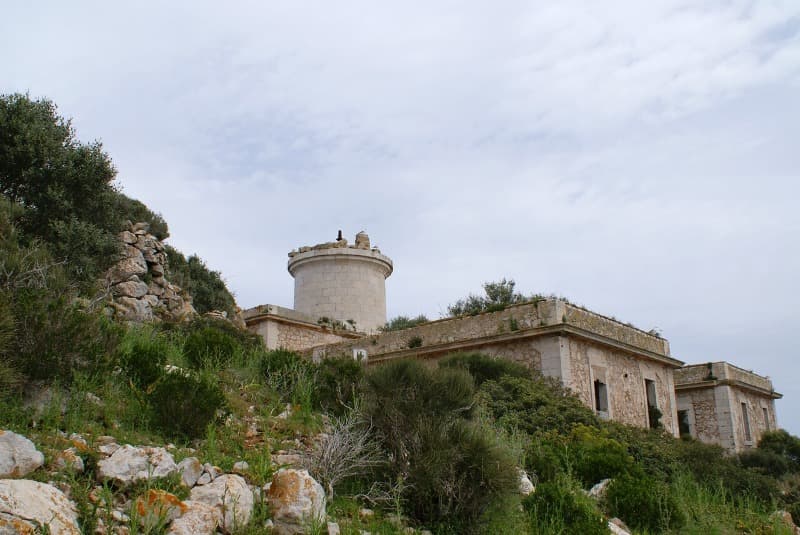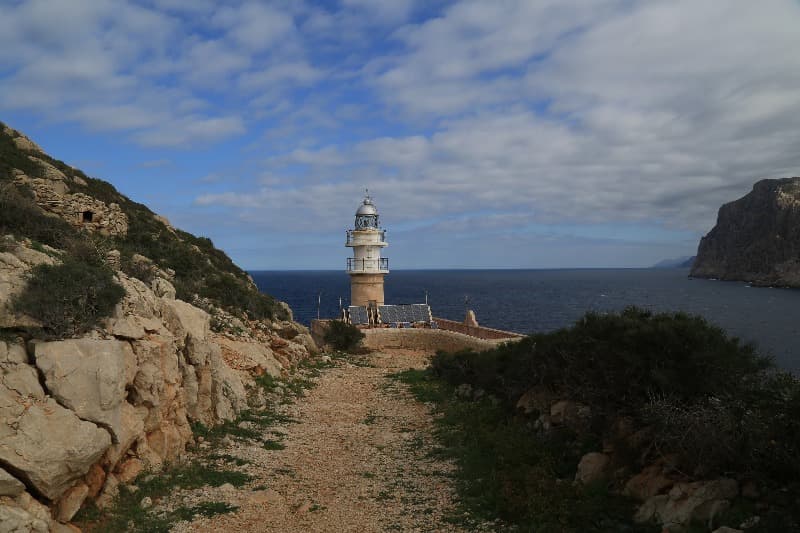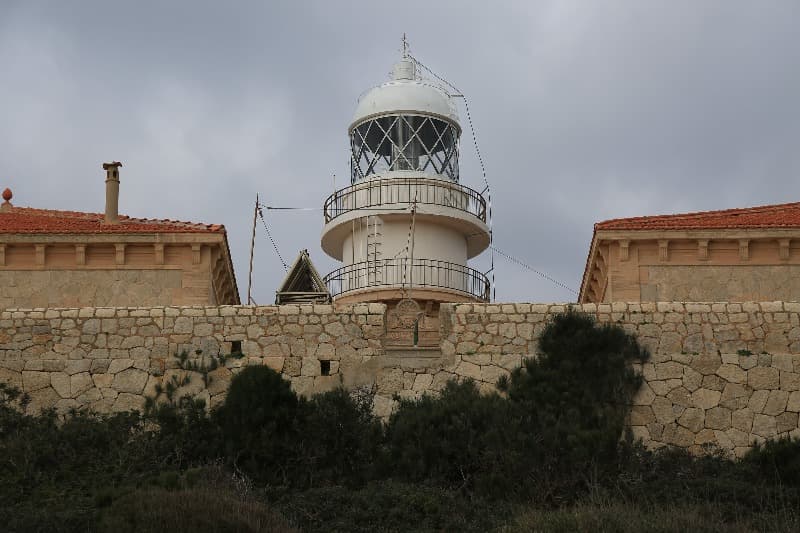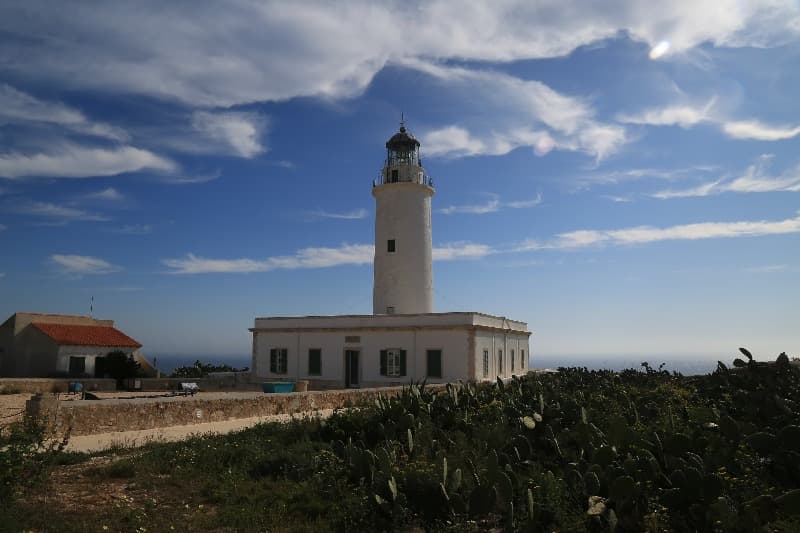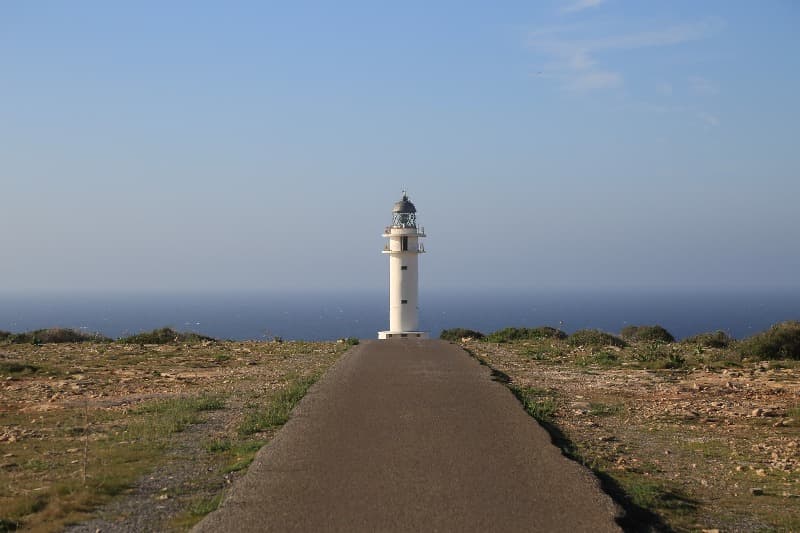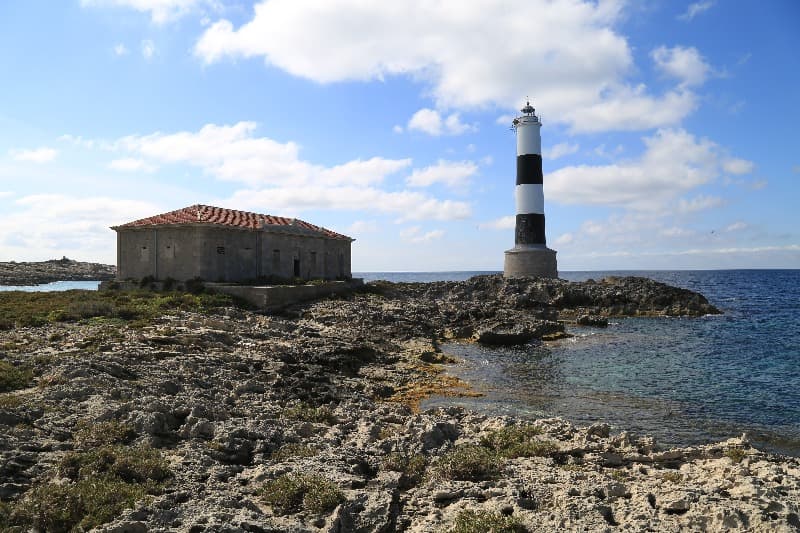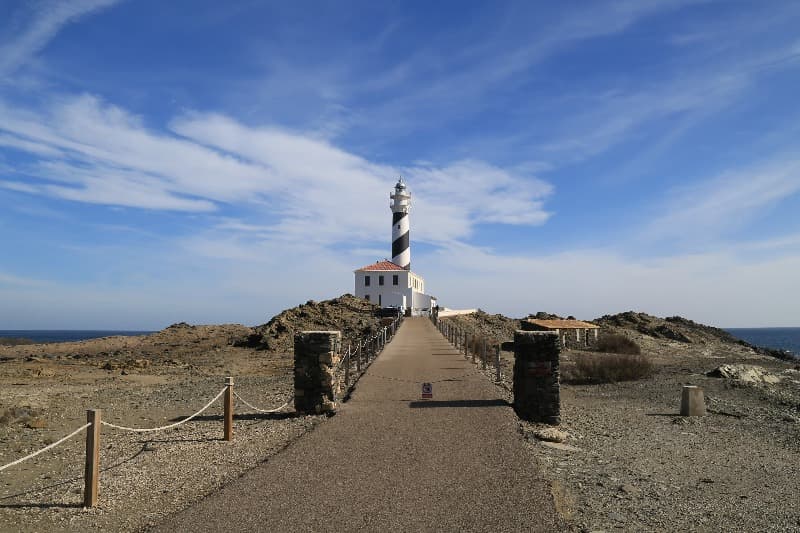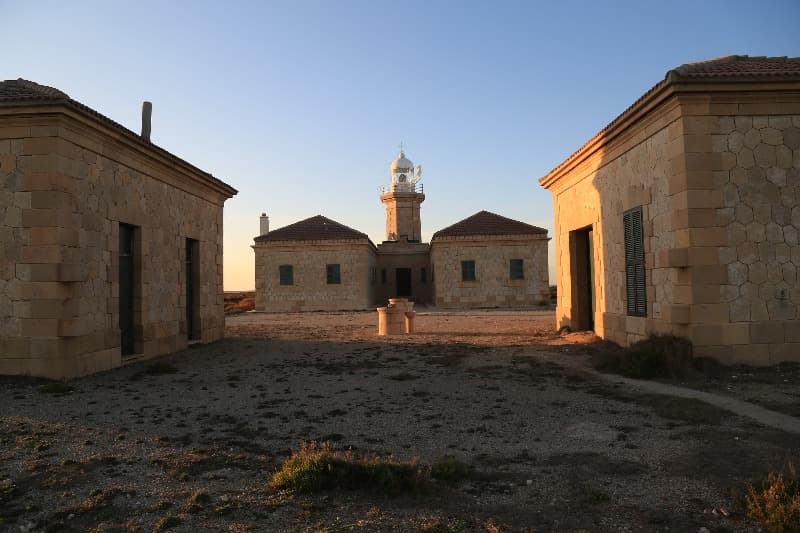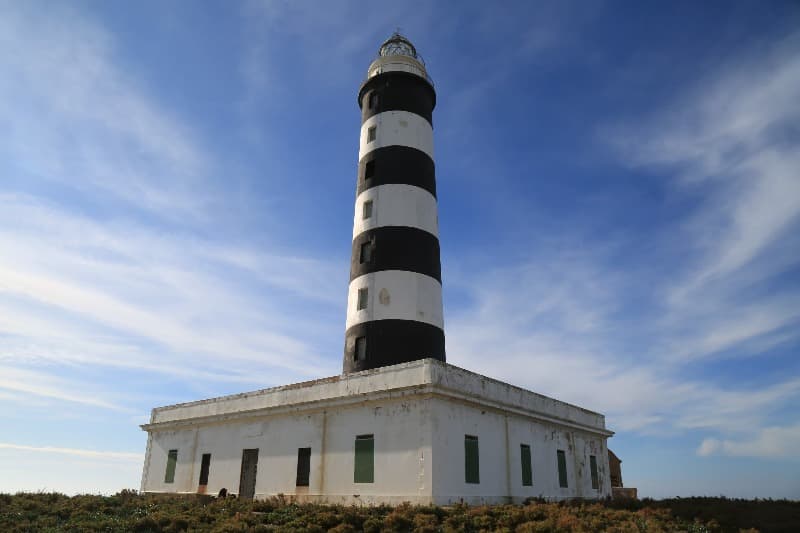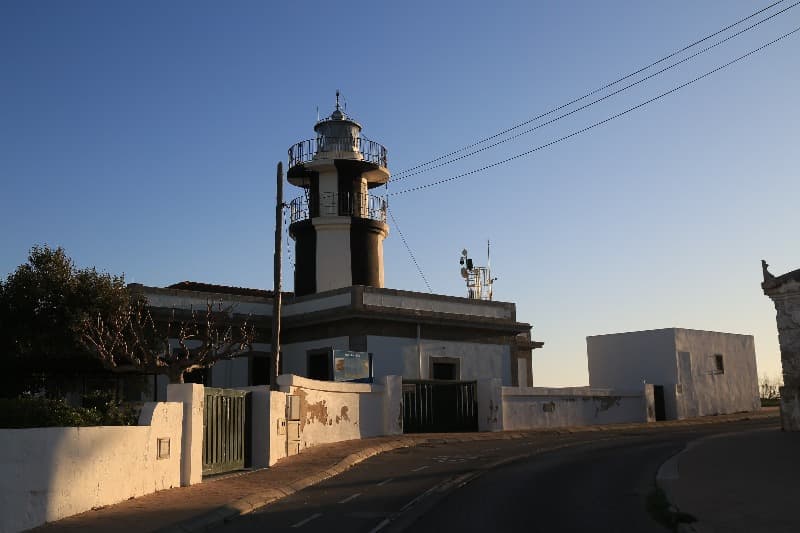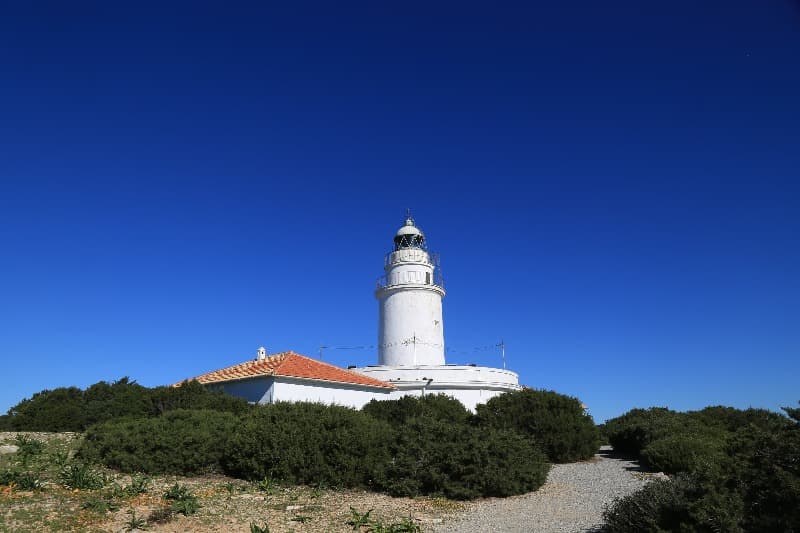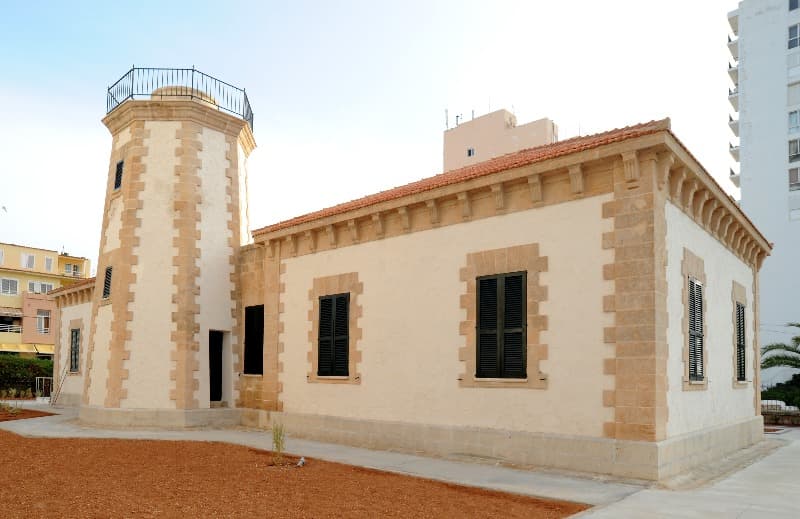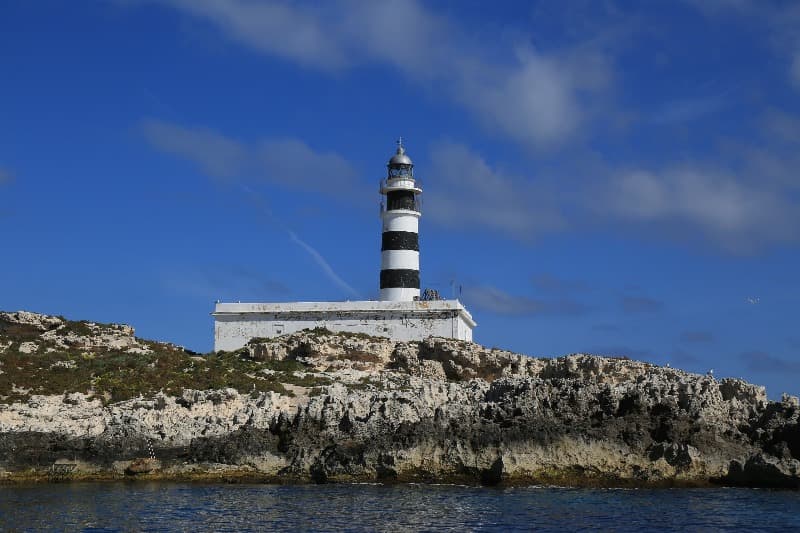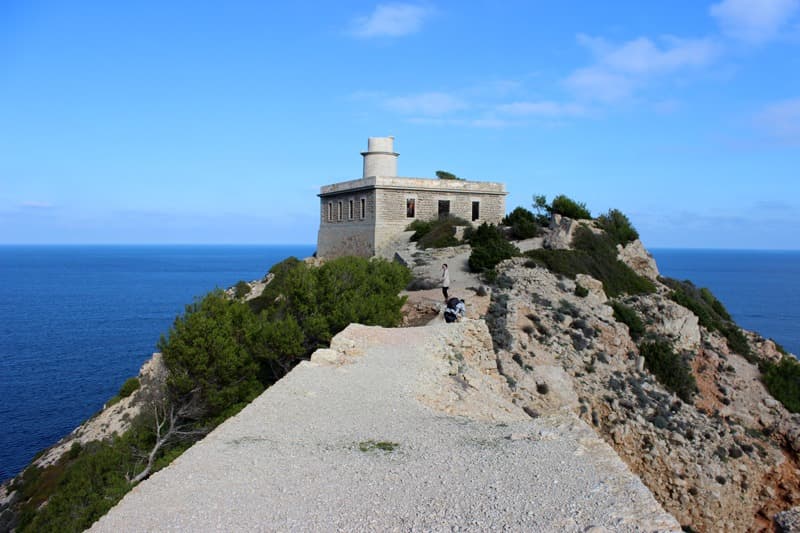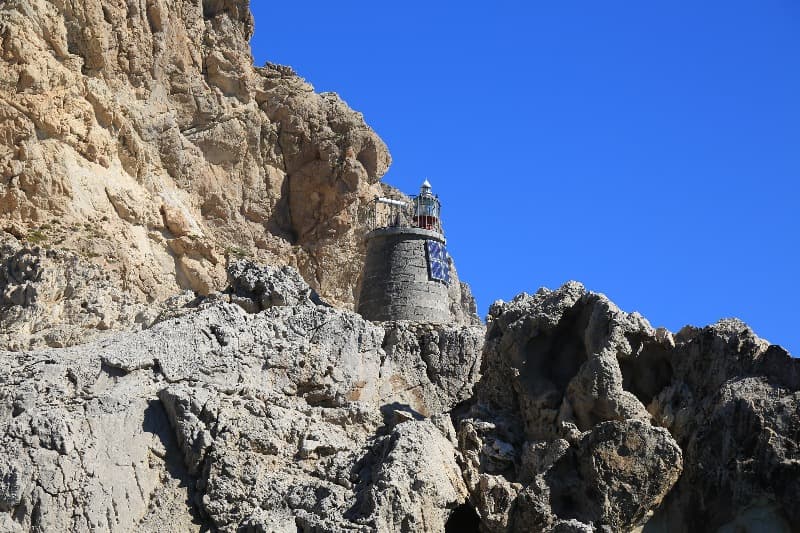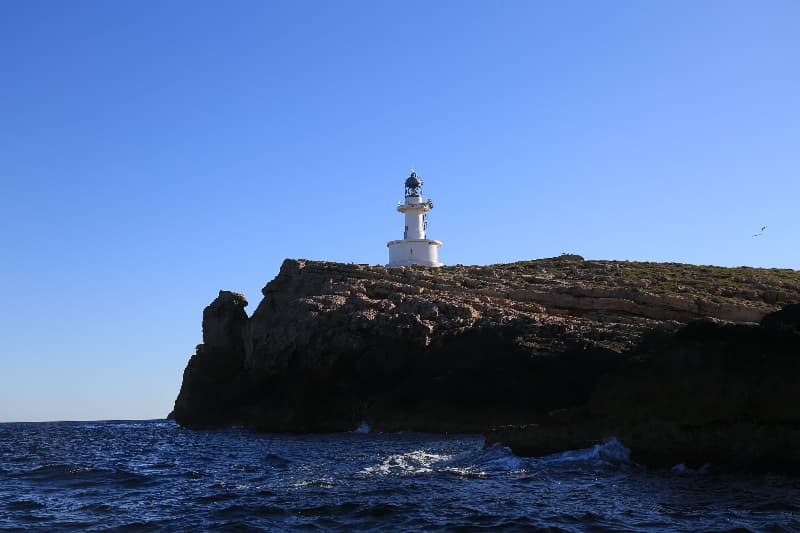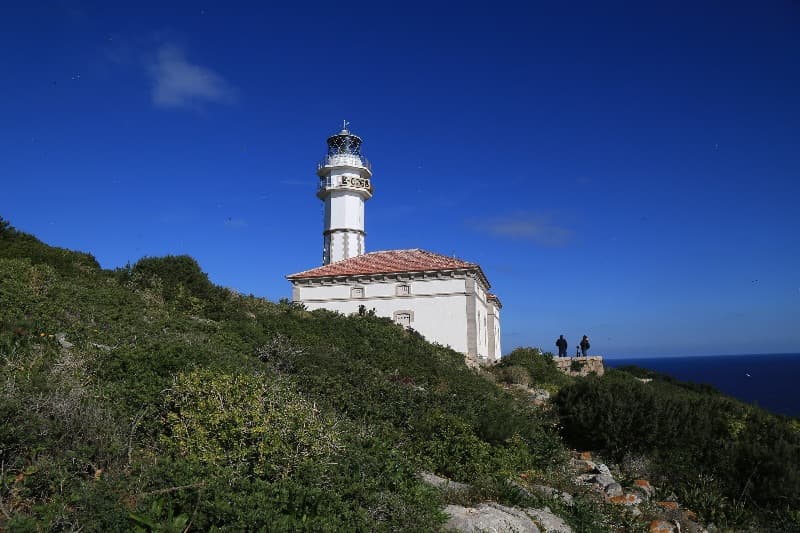
Cala Figuera lighthouse
-
Technische Daten
-
Verlauf
-
360 Grad
-
Bilder/Videos
-
Staatseigentum
-
Leuchtturme im blickfeld
Technische Daten
Nördl. Breite
39.457320000000
Östl. Länge
2.522714000000
Nenntragweite
22 nautical miles
Höhe über dem Meeresspiegel
45 m.
Leuchtfeuer
Groups of 4 flashes every 20 seconds.
Leuchtfeuer am Tag
White conical tower with a black spiral. Height 24 metres.
Verlauf
Was designed by Emili Pou. It was opened on July 31, 1860 as a 6th order lighthouse with a fixed light and constant level single wick lamps, although it actually received a 5th order lens.
1n 1919 rotating panels were installed producing two occultations every 10 seconds. The light was powered by an acetylene generator situated in a nearby blockhouse.
In 1950 the system broke down and was replaced by petrol-burning Maris or Aladdin lamps (both were used alternately).
In 1962 the old lantern was replaced by a new aero-maritime lantern. The signal was also converted to electricity and the tower was raised in height. At this time the optic was replaced by a 4th order aero-maritime lens producing groups of four flashes every 20 seconds. At this time the light was produced by 1500w lamps.
In September 1970 a radio transmitter started operating (now GPS differential DGPS) and at the same time the keepers’ dwellings were enlarged.
Given the low height of the cliffs in this area, in high south-westerly winds the waves would often wash over the lighthouse buildings. Among the shipwrecks occurring in this area was the 1953 running aground at Punta del Mulá of the Ciudad de Palma, owned by Transmediterranea SA with no loss of life. When the lighthouse was initially opened it was equipped with a supply boat and a track was built for bring supplies and fuel up to the clifftop.
The ruins of the jetty and track can still be seen today. When an automatic beacon was placed at El Toro Island in 1926, the Cala Figuera lighthouse keepers were responsible for its upkeep. They were taken from a small jetty nearby to the rock where they would carry out their maintenance work. One of the most arduous and dangerous tasks was lifting the acetylene bottles using a clifftop boom; if the sea was not calm this could be very hazardous.
Audioguides
Staatseigentum
Leuchtturme im blickfeld
Nächstgelegene Leuchttürme
Leuchttürme auf Baleares
-
Mallorca
-
Cabrera
-
Sa Dragonera
-
Formentera
-
Menorca
-
Eivissa

